Washington offers more than just scenic views—its wild spaces are packed with edible plants waiting to be discovered. Thimbleberries, cow parsnip shoots, and wild mustard are just a few examples of what grows in the open fields and forest edges. Even a short walk through a state park can reveal something worth picking.
Many edible plants in Washington grow in places that seem ordinary at first. You might pass right by purslane growing along a slow-moving stream or miss out on chickweed nestled among gravel and grass. They’re easy to overlook unless you know exactly what to spot.
There are dozens more edible plants growing all around the state that most people don’t recognize. Whether you’re along the coast or deep in the woods, chances are good that something edible is nearby. Once you learn the right clues, you’ll start seeing just how much Washington’s landscapes have to offer.
What We Cover In This Article:
- The Edible Plants Found in the State
- Toxic Plants That Look Like Edible Plants
- How to Get the Best Results Foraging
- Where to Find Forageables in the State
- Peak Foraging Seasons
- The extensive local experience and understanding of our team
- Input from multiple local foragers and foraging groups
- The accessibility of the various locations
- Safety and potential hazards when collecting
- Private and public locations
- A desire to include locations for both experienced foragers and those who are just starting out
Using these weights we think we’ve put together the best list out there for just about any forager to be successful!
A Quick Reminder
Before we get into the specifics about where and how to find these plants and mushrooms, we want to be clear that before ingesting any wild plant or mushroom, it should be identified with 100% certainty as edible by someone qualified and experienced in mushroom and plant identification, such as a professional mycologist or an expert forager. Misidentification can lead to serious illness or death.
All plants and mushrooms have the potential to cause severe adverse reactions in certain individuals, even death. If you are consuming wild foragables, it is crucial to cook them thoroughly and properly and only eat a small portion to test for personal tolerance. Some people may have allergies or sensitivities to specific mushrooms and plants, even if they are considered safe for others.
The information provided in this article is for general informational and educational purposes only. Foraging involves inherent risks.
The Edible Plants Found in the State
Wild plants found across the state can add fresh, seasonal ingredients to your meals:
Dandelion (Taraxacum officinale)
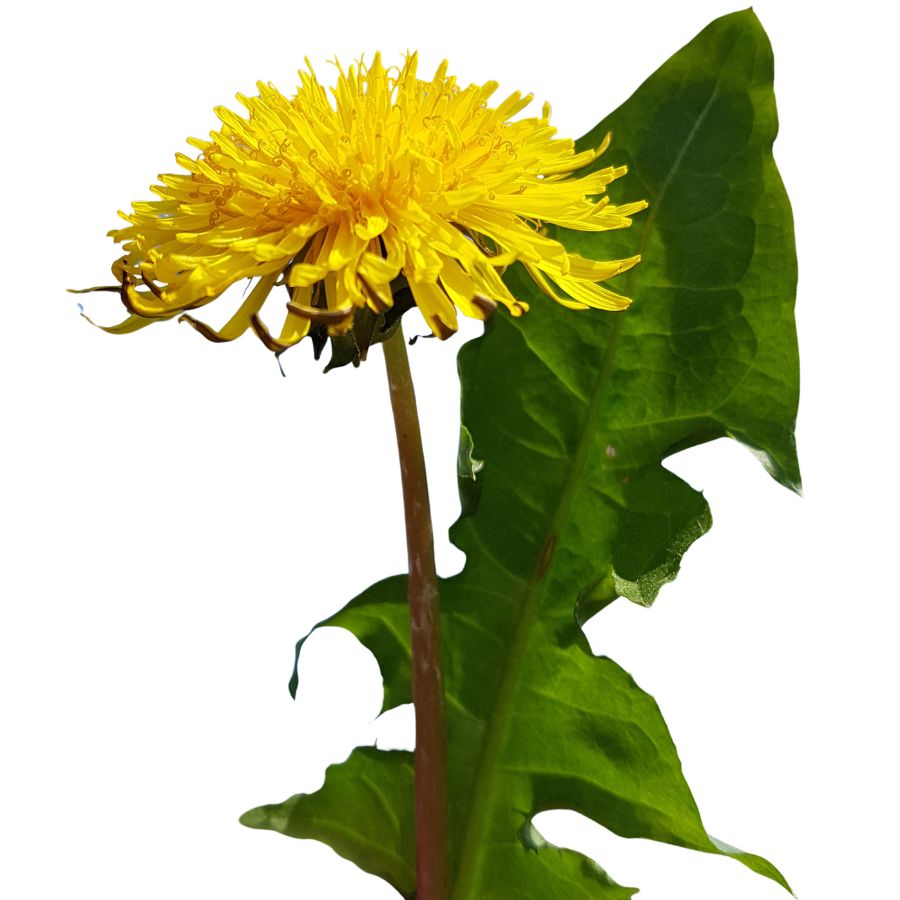
Bright yellow flowers and jagged, deeply toothed leaves make dandelions easy to spot in open fields, lawns, and roadsides. You might also hear them called lion’s tooth, blowball, or puffball once the flowers turn into round, white seed heads.
Every part of the dandelion is edible, but you will want to avoid harvesting from places treated with pesticides or roadside areas with heavy car traffic. Besides being a food source, dandelions have been used traditionally for simple herbal remedies and natural dye projects.
Young dandelion leaves have a slightly bitter, peppery flavor that works well in salads or sautés, and the flowers can be fried into fritters or brewed into tea. Some people even roast the roots to make a coffee substitute with a rich, earthy taste.
One thing to watch out for is cat’s ear, a common lookalike with hairy leaves and branching flower stems instead of a single, hollow one. To make sure you have a true dandelion, check for a smooth, hairless stem that oozes a milky sap when broken.
Stinging Nettle (Urtica dioica)
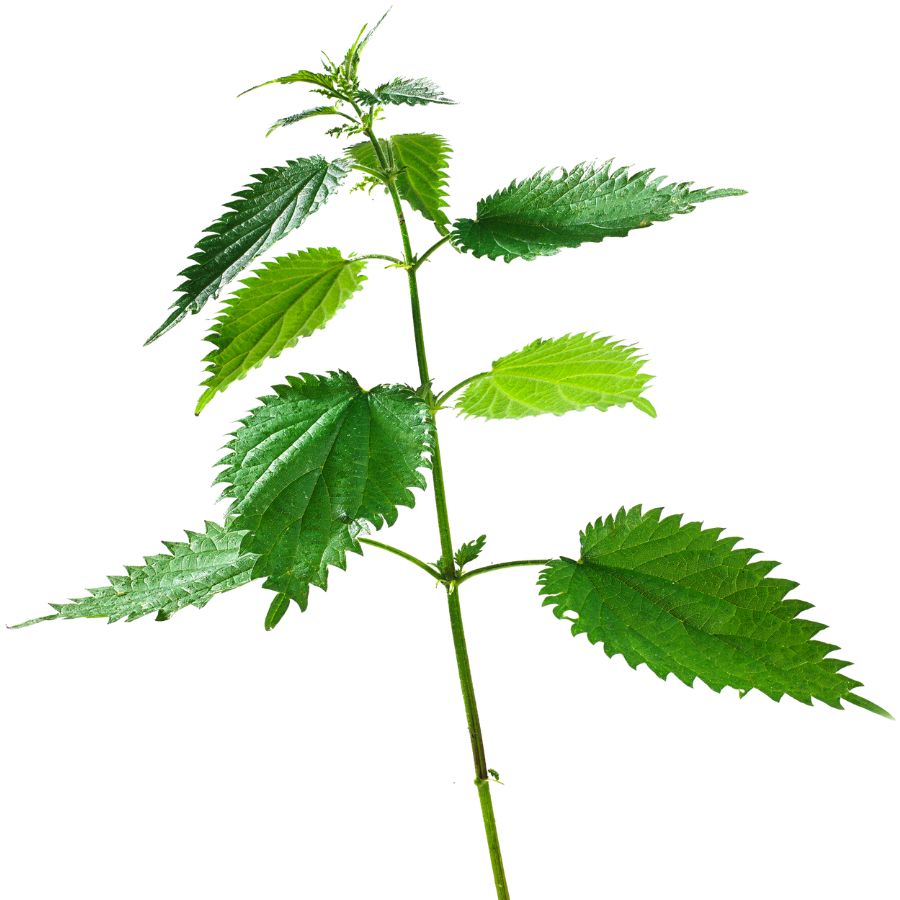
Stinging nettle is also known as burn weed or devil leaf, and it definitely earns those names. The tiny hairs on its leaves and stems can leave a painful, tingling rash if you brush against it raw, so always wear gloves when handling it.
Once it’s cooked or dried, those stingers lose their punch, and the leaves turn mild and slightly earthy in flavor. The texture softens too, making it a solid substitute for spinach in soups, pastas, or even as a simple sauté.
The young leaves and tender tops are what you want to collect. Avoid the tough lower stems and older leaves, which can be gritty or unpleasant to chew.
Some people confuse stinging nettle with purple deadnettle or henbit, but those don’t sting and have more rounded, fuzzy leaves. If the plant doesn’t make your skin react, it’s not stinging nettle.
Plantain (Plantago spp.)
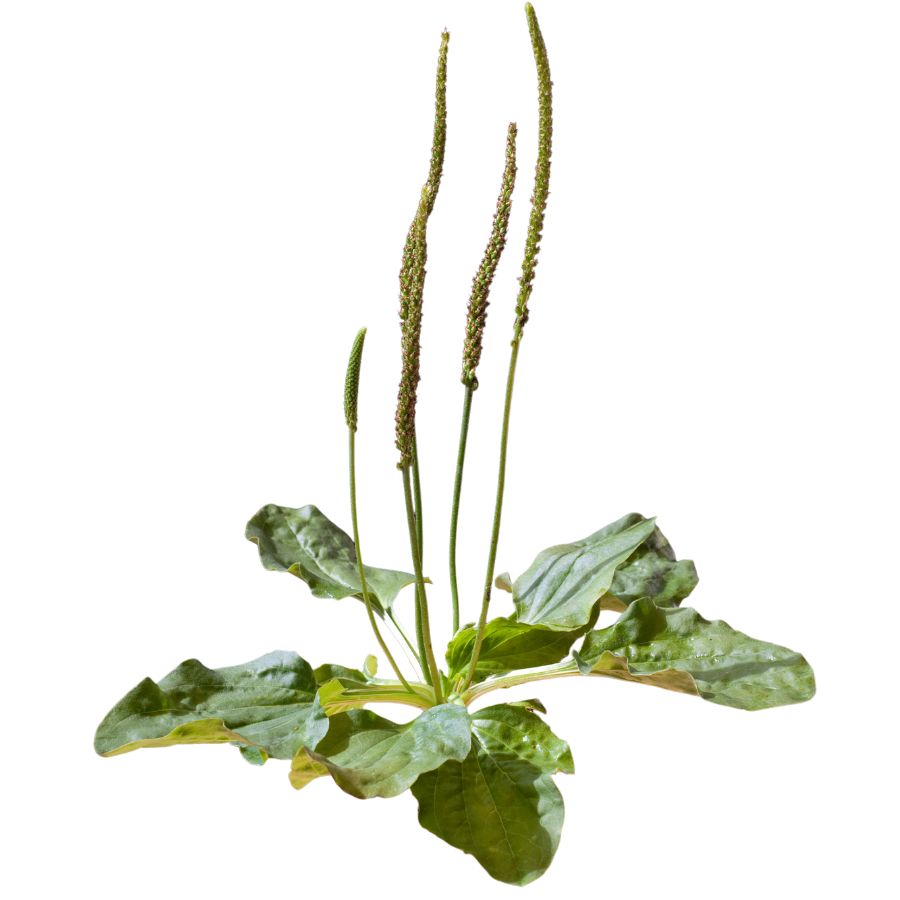
Plantain, also called common plantain or narrowleaf plantain depending on the type, is a low-growing plant with broad or lance-shaped leaves and tall, slender flower spikes. The leaves grow in a rosette close to the ground, and the thick veins running through them are one of the easiest ways to tell it apart from other plants.
You can mainly eat the young leaves and the seeds of the plants. Older leaves can become tough and stringy, so it is best to pick the smaller, tender ones when you want to eat them.
Plantain leaves have a slightly bitter, earthy taste and a chewy texture, especially when eaten raw. Many people like to add them to salads, soups, or stews, or lightly steam them to soften the flavor.
Always make sure you have a true plantain before eating because some similar-looking yard plants are not palatable and can upset your stomach. Look for the strong parallel veins and the tough, fibrous stems to help confirm your find.
Chickweed (Stellaria media)
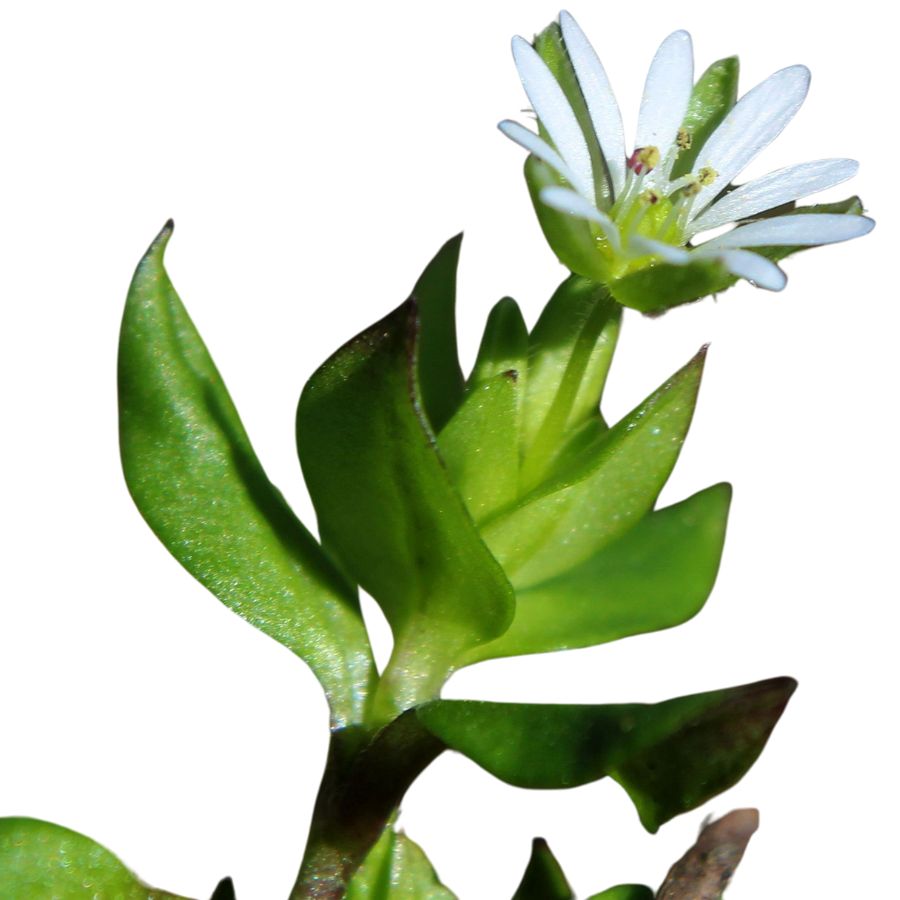
Chickweed, sometimes called satin flower or starweed, is a small, low-growing plant with delicate white star-shaped flowers and bright green leaves. The leaves are oval, pointed at the tip, and often grow in pairs along a slender, somewhat weak-looking stem.
When gathering chickweed, watch out for lookalikes like scarlet pimpernel, which has similar leaves but orange flowers instead of white. A key detail to check is the fine line of hairs that runs along one side of chickweed’s stem, a feature the dangerous lookalikes do not have.
The young leaves, tender stems, and flowers of chickweed are all edible, offering a mild, slightly grassy flavor with a crisp texture. You can toss it fresh into salads, blend it into pestos, or lightly wilt it into soups and stir-fries for a fresh green boost.
Aside from being a food plant, chickweed has been used traditionally in poultices and salves to help soothe skin irritations. Always make sure the plant is positively identified before eating, since mistaking it for a toxic lookalike could cause serious issues.
Red Clover (Trifolium pratense)
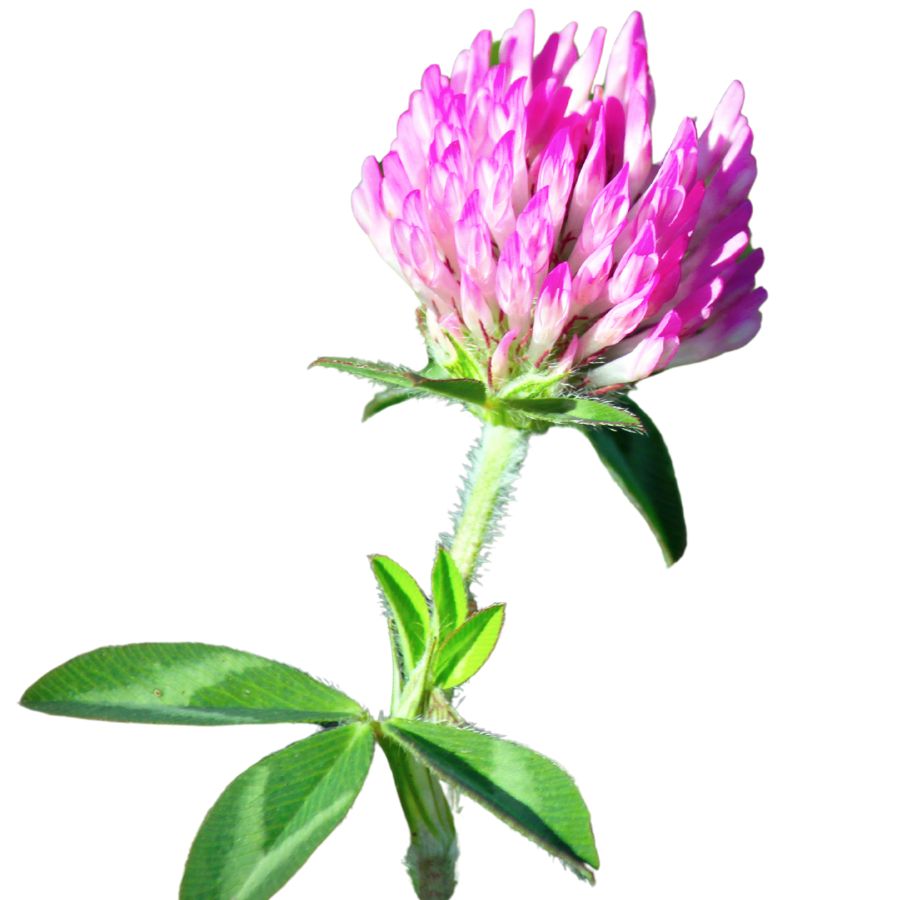
Red clover is also called wild clover or purple clover, and it grows in open areas with lots of sunlight. The round flower heads are a soft pinkish red, and the leaves have a pale crescent near the center.
The flower heads are the part most often gathered, and they can be eaten raw or dried for later use. Some people steep them in hot water for a mild, slightly sweet tea with a grassy flavor.
If you’re collecting flowers, make sure not to confuse them with crown vetch, which grows in similar spots but has more elongated, pea-like flowers. Crown vetch isn’t safe to eat, and it usually has a vine-like growth pattern that red clover doesn’t.
Red clover flowers can be tossed into salads or baked into muffins and breads for color and a hint of sweetness. The leaves are sometimes eaten too, but they tend to be tougher and more bitter.
Purslane (Portulaca oleracea)
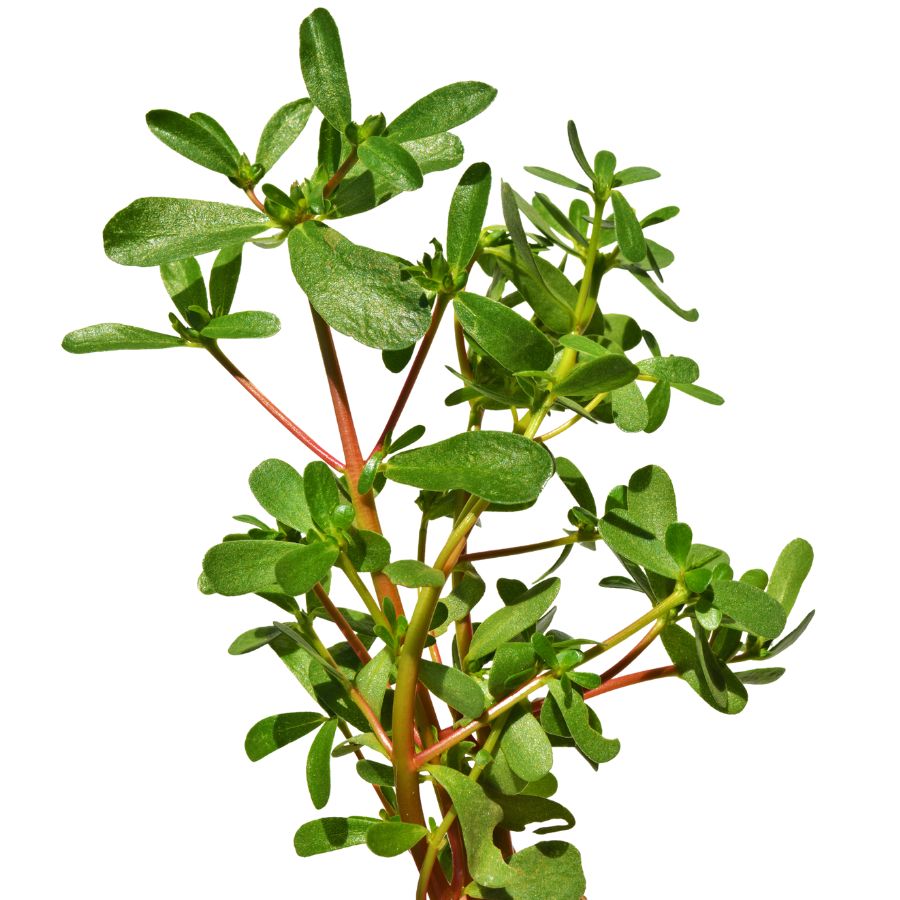
Purslane is a hardy, low-growing plant that’s also sometimes known as little hogweed or verdolaga. It has smooth, reddish stems and thick, paddle-shaped leaves that feel a bit waxy when you touch them.
The stems, leaves, and tiny yellow flowers are all edible, while the roots are not typically eaten. Purslane has a crisp texture with a slightly tart, lemony flavor that works well raw or cooked.
Some plants that look similar include spurge, which has a milky sap and is not edible, so it is important to check for purslane’s smooth, succulent stems and lack of sap. Always double-check by gently snapping a stem to make sure no white liquid appears.
You can toss fresh purslane into salads, sauté it lightly like spinach, or pickle it for later use. Its mild tartness and slight crunch make it a refreshing addition to sandwiches, soups, and even stir-fries.
Wood Sorrel (Oxalis spp.)
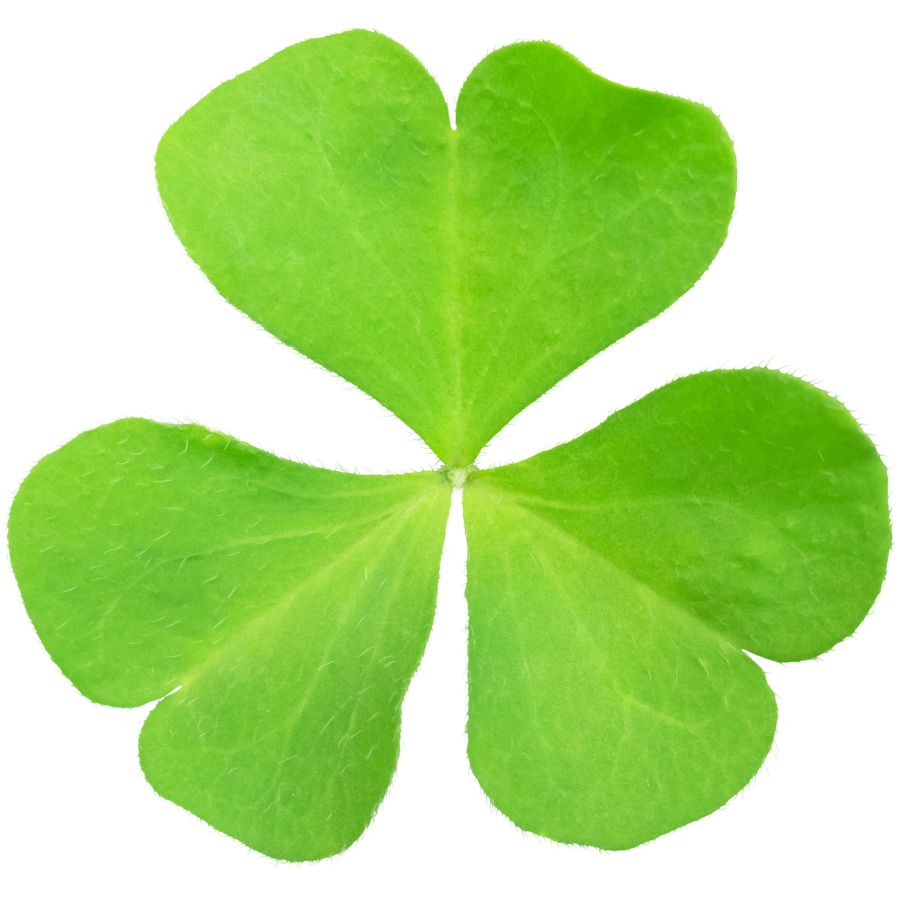
Wood sorrel is easy to spot with its clover-like leaves, delicate flowers, and sour flavor. It often goes by names like sourgrass and shamrock, although it is not the same as the traditional Irish shamrock.
Wood sorrel can be mistaken for true clovers, which do not have the same sour taste. Always check the leaf shape and flavor before eating, because wood sorrel leaves are distinctly heart-shaped and more delicate.
The leaves, flowers, and seed pods of wood sorrel are all edible and have a sharp, lemony taste that makes them a refreshing trail snack. You can also toss them into salads or use them as a garnish to brighten up a dish with their tartness.
While wood sorrel is generally safe in small amounts, it does contain oxalic acid, so it is best not to eat large quantities. Some people also like to brew the leaves into a light, tangy tea, adding another way to enjoy this common and flavorful wild plant.
Mallow (Malva spp.)
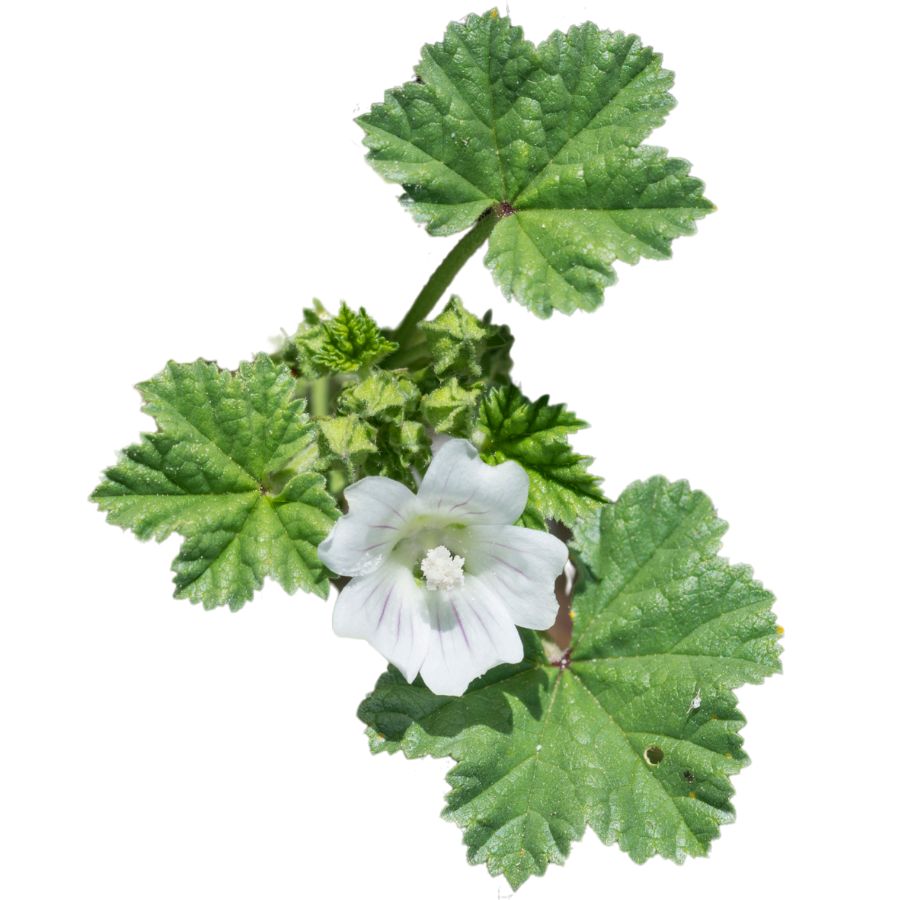
Mallow, often called common mallow or cheeseweed, grows low to the ground and spreads with round, crinkled leaves that look a bit like tiny lily pads. It produces small pale purple or pink flowers with five delicate petals, and the seed pods are shaped like little green wheels.
The leaves, flowers, and immature seed pods of mallow are all edible, offering a mild, slightly sweet flavor and a soft, somewhat mucilaginous texture. Some people add the leaves to salads, toss them into soups for thickening, or quickly sauté them with garlic for a simple side dish.
When gathering mallow, make sure you do not confuse it with young deadly nightshade plants, which can sometimes grow in similar weedy areas but have very different flower and fruit structures. Mallow is safe to eat, but it tends to absorb pollutants from the soil, so be cautious about harvesting from roadsides or contaminated areas.
An interesting thing about mallow is that it was traditionally used for soothing sore throats and irritated skin because of its natural slimy quality. If you are foraging for food and medicine, mallow is a versatile and easy plant to start with once you are confident in your identification.
Yarrow (Achillea millefolium)
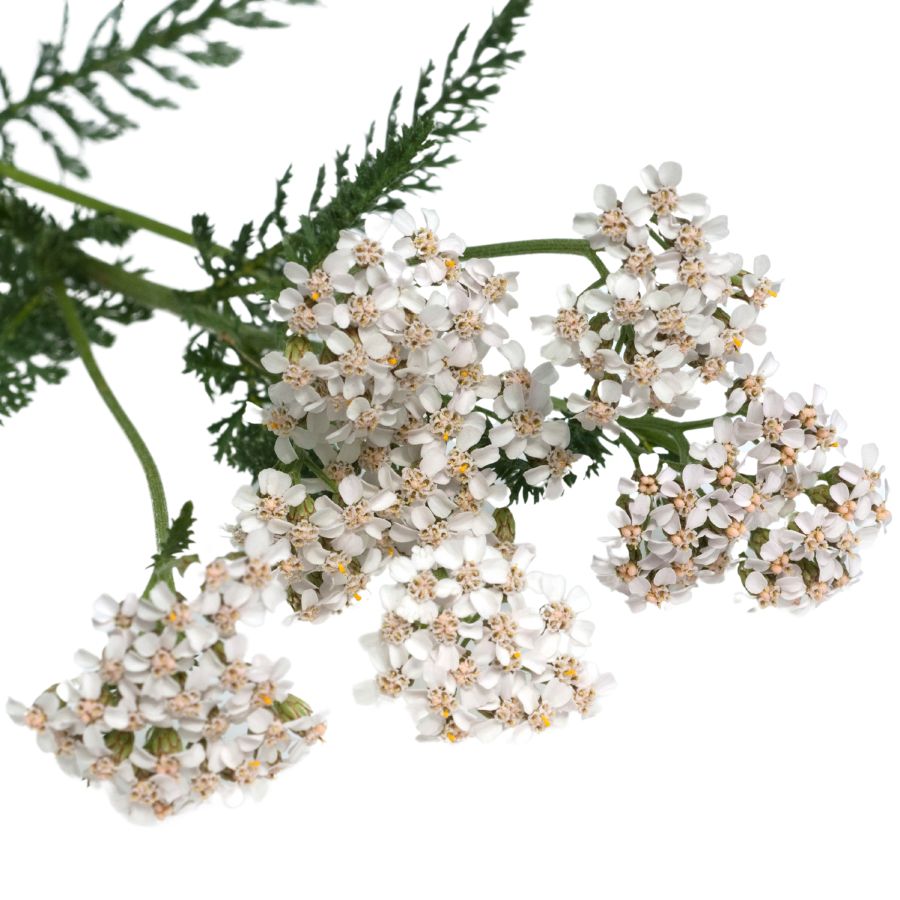
The first thing you’ll notice about yarrow is its flat-topped clusters of tiny white flowers and its finely divided, almost feathery leaves. You can eat the leaves and flowers, though the taste is bitter and earthy, with a slightly peppery kick.
It’s often used in small amounts to flavor soups, sauces, or infused into vinegar for a wild herbal edge. Drying the leaves for later use is common, especially if you want to tame some of the bitterness.
Be cautious not to confuse it with poison hemlock, which has smooth purple-spotted stems and lacks the fern-like leaves of yarrow. If you crush a yarrow leaf, the strong herbal scent is another helpful clue.
Don’t eat the stems or roots—they’re tough and unpleasant. Stick to the upper leaves and blossoms if you’re planning to add it to food.
Blackberry (Rubus fruticosus)
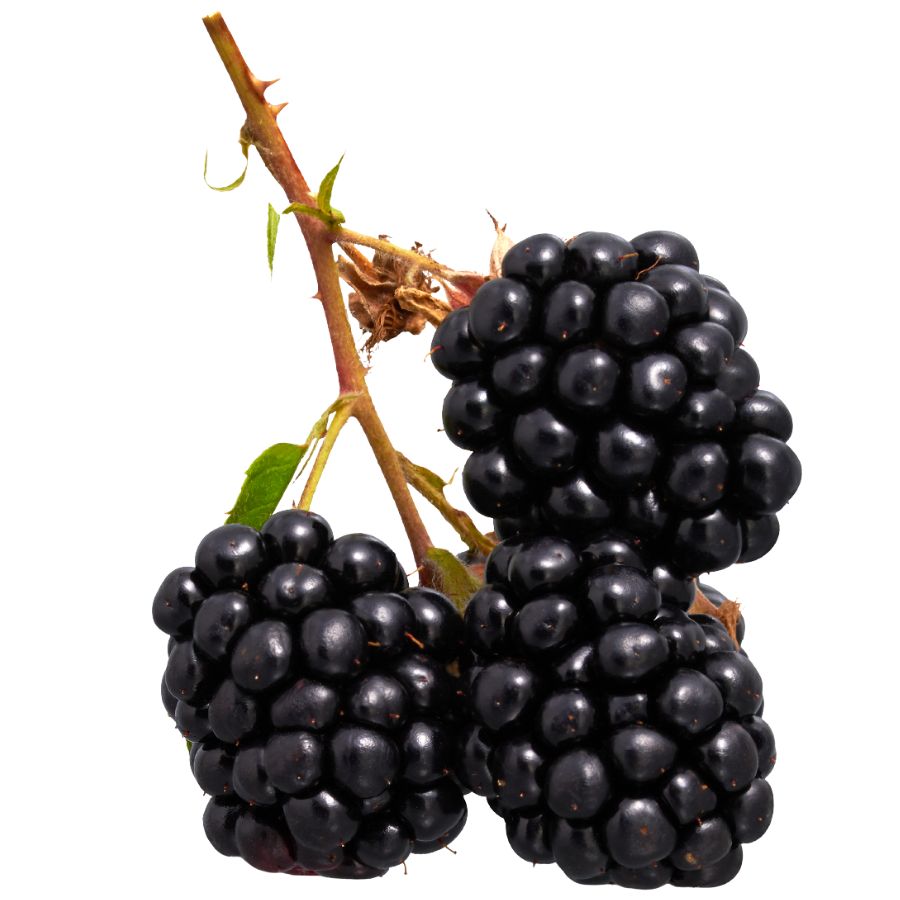
Blackberry, also known as brambleberry or dewberry, grows on thick, thorny canes that can arch and spread across the ground. The leaves are usually serrated, and the fruit ripens from green to red before turning deep purple or black when fully ready to pick.
The berries have a sweet, tangy flavor with a soft, juicy texture that easily bursts in your mouth. You can eat them raw, bake them into pies and cobblers, or preserve them by making jams and jellies.
Only the ripe fruit of the blackberry plant is edible, while the stems and leaves are not usually eaten.
Some plants like black raspberry can look similar, but black raspberries are hollow in the center when picked while blackberries have a solid core. It’s important to avoid confusing blackberries with nightshade berries, which grow on upright plants without thorny vines and can be toxic.
An interesting thing about blackberries is that they are technically not a single berry but a cluster of small drupelets packed together.
Salmonberry (Rubus spectabilis)
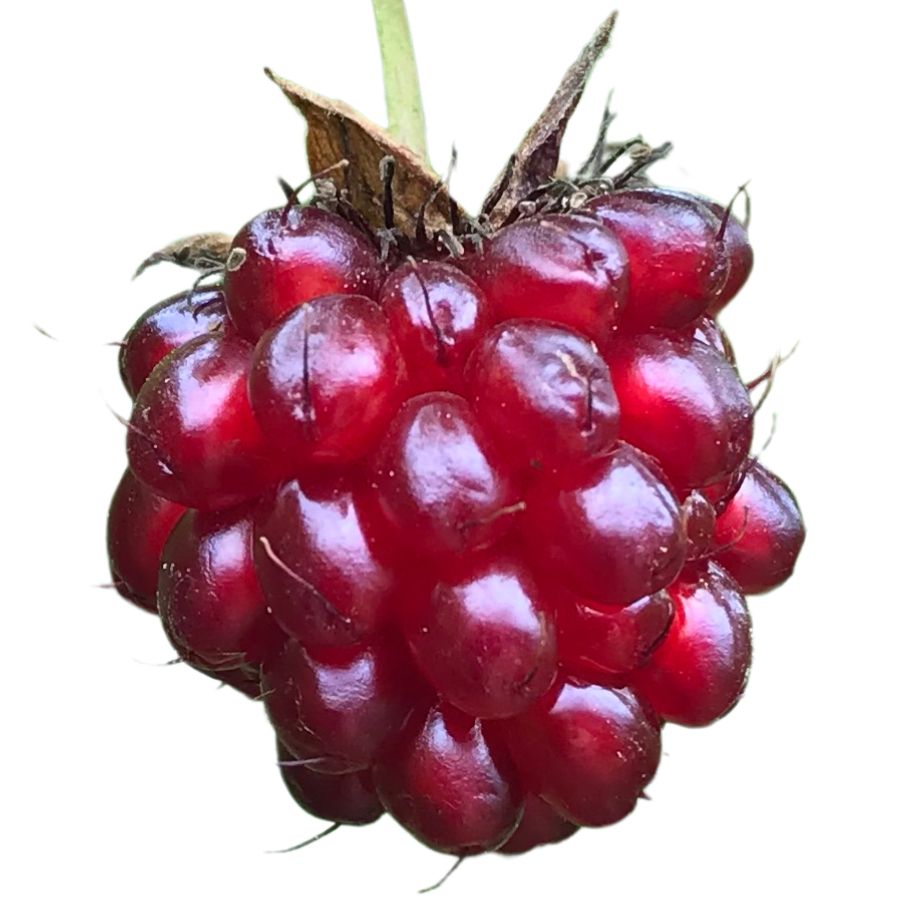
Salmonberries are bright pink to red berries that are a sweet, tangy treat. They are similar to raspberries but have a firmer texture and a more pronounced sweetness with a slight tart finish.
Although the berries are safe to eat, it’s important to avoid consuming the leaves, as they can lead to mild stomach irritation. Keep an eye out for thimbleberry plants, which can look similar but have softer fruit and a distinctly different flavor profile.
Fresh salmonberries are often enjoyed on their own, mixed into yogurt, or turned into homemade preserves like jam. The fruit also freezes well, which allows you to enjoy the harvest long after picking.
Salmonberry bushes can be found along the edges of wetlands, and their thorns can make picking them a bit of a challenge. However, the effort is well worth it for those who enjoy the rich taste and versatility of this unique berry.
Thimbleberry (Rubus parviflorus)
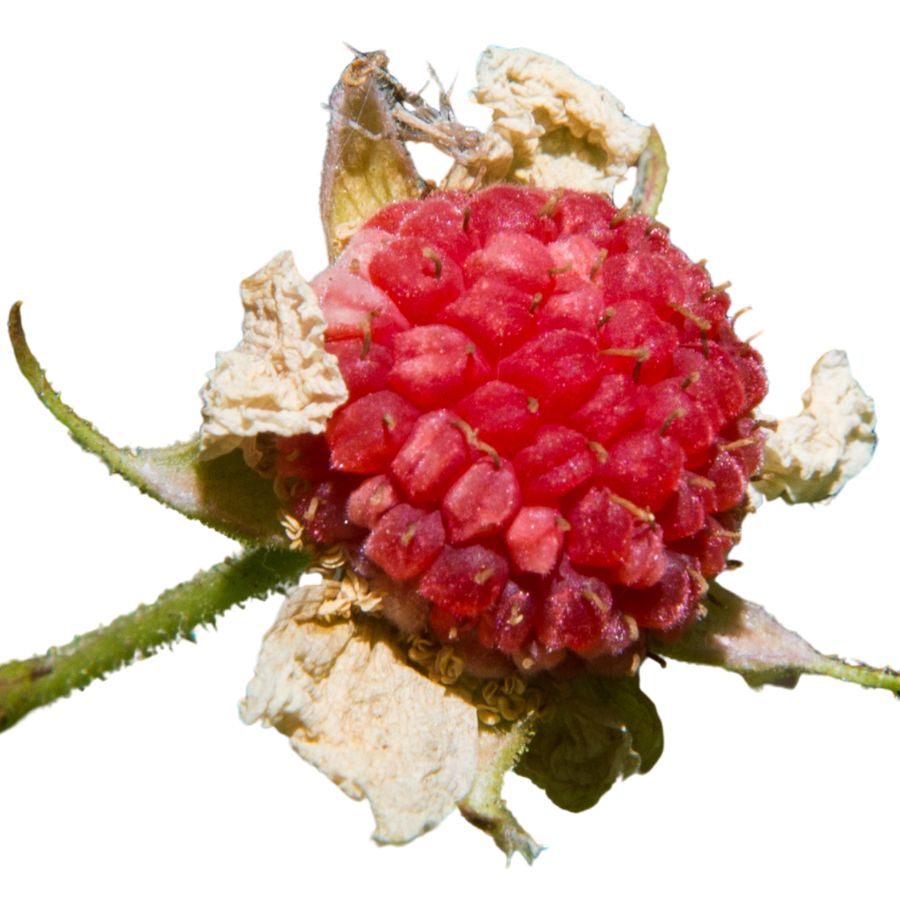
Thimbleberry is a native shrub that produces bright red, hollow berries with a seedy, melt-in-your-mouth texture. You can eat them raw, but they’re often used in jams and desserts because they fall apart easily.
The leaves are soft and wide with five deep lobes, unlike the more jagged or compound leaves of black raspberry or blackberry. Be cautious of misidentifying it with red raspberry, which has thorny stems and smaller, firmer fruit.
There’s no commercial thimbleberry farming because the fruit is too fragile to ship.
Thimbleberry has no thorns, which makes harvesting less painful compared to other berries in the same family. The plant’s white, five-petaled flowers are another clue you’ve found the right thing.
Don’t eat the leaves or stems; they aren’t toxic, but they’re not used for food.
Woodland Strawberry (Fragaria vesca)
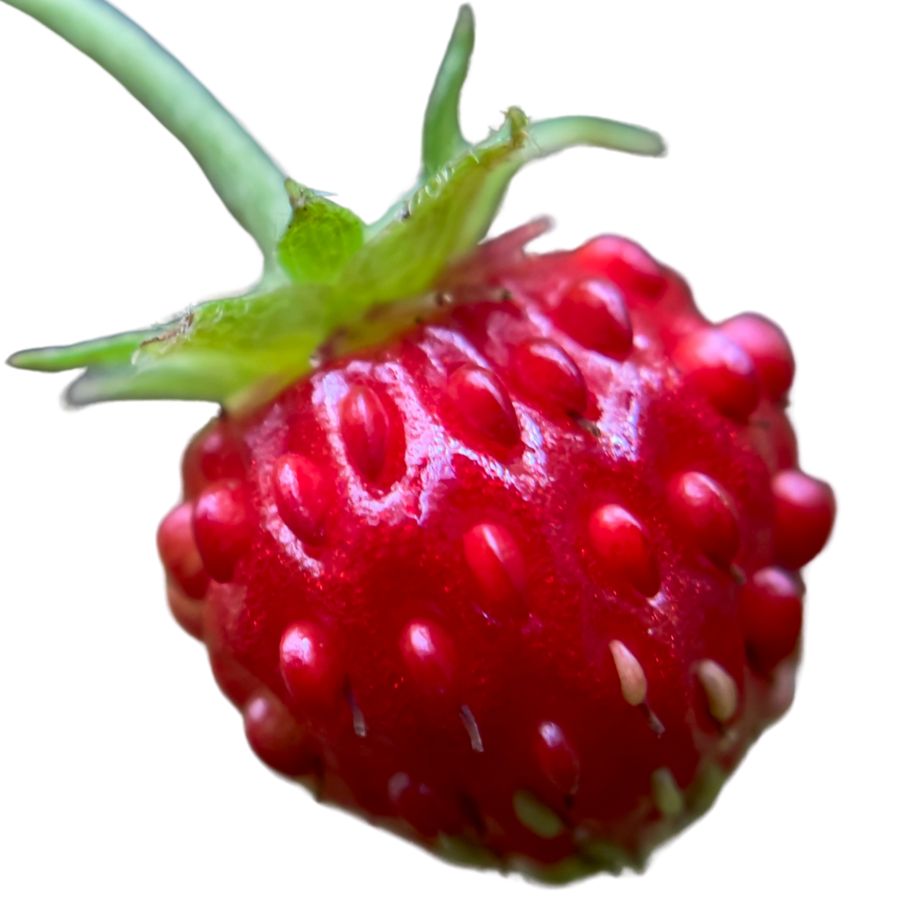
With their red, cone-shaped berries and tri-toothed leaves, woodland strawberries are a favorite among foragers. The plant’s low height and hairy stems are also good identifiers when scanning the forest floor.
The flavor is intensely sweet with a slightly tart finish, and the texture is soft enough to crush easily between your fingers. They make excellent ingredients in baked goods or can be eaten straight off the plant.
If you’re preserving a batch, freezing or low-heat dehydrating both work well without ruining the flavor.
There’s a tempting but unappetizing lookalike called mock strawberry, which has dry, flavorless fruit and bright yellow flowers. Its fruit grows pointing up, while woodland strawberry’s fruit droops slightly once ripe.
Stick to the ripe berries and leaves for eating; ignore the rest.
Red Raspberry (Rubus idaeus)
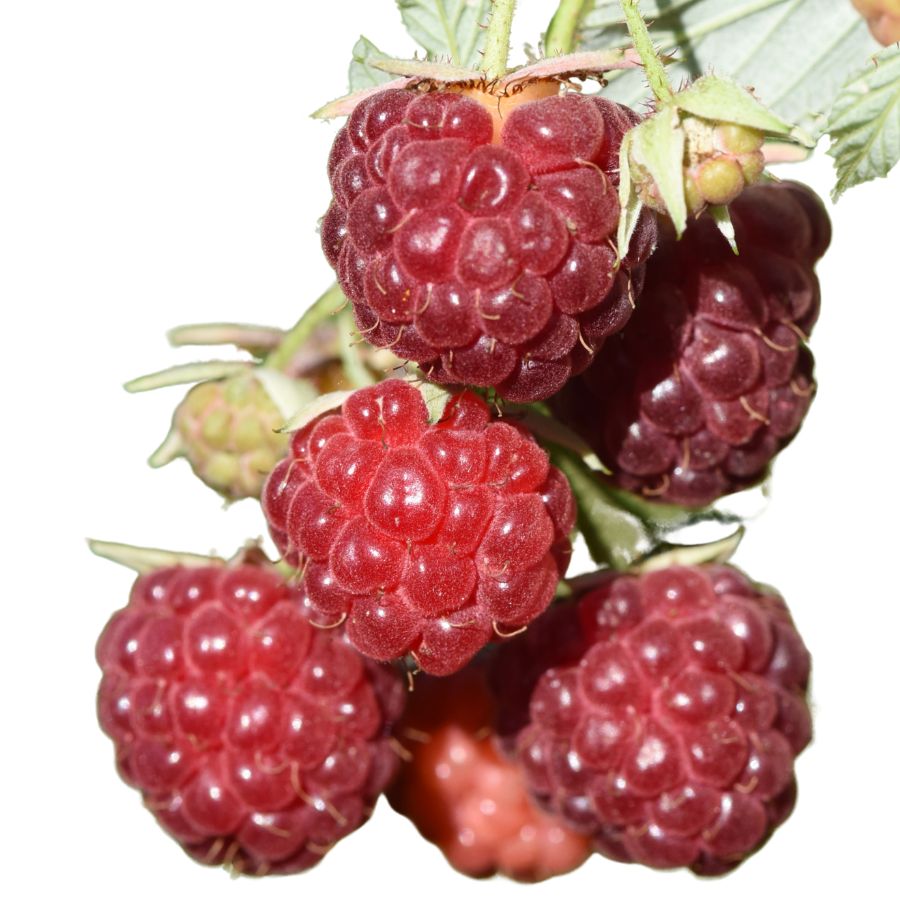
The red raspberry, also called wild raspberry or bramble raspberry, grows on prickly, arching canes with compound leaves and clusters of red drupelets. You’ll usually find them forming loose thickets, with berries that pull away cleanly from the core when ripe.
The fruit is sweet-tart and juicy with a soft, seedy texture, often used in jams, jellies, or baked into pies. Leaves and stems aren’t edible and shouldn’t be consumed.
While it looks a lot like wineberry or thimbleberry, red raspberry’s hollow core and matte, soft drupelets help separate it from those. Wineberries, in particular, have a shiny, sticky coating and red bristles on their stems.
Unwashed berries can sometimes host small insects or eggs, so rinse them thoroughly before eating or preserving. The fruit can also be frozen or dried for later use, though fresh is when it’s most flavorful.
Elderberry (Sambucus nigra)
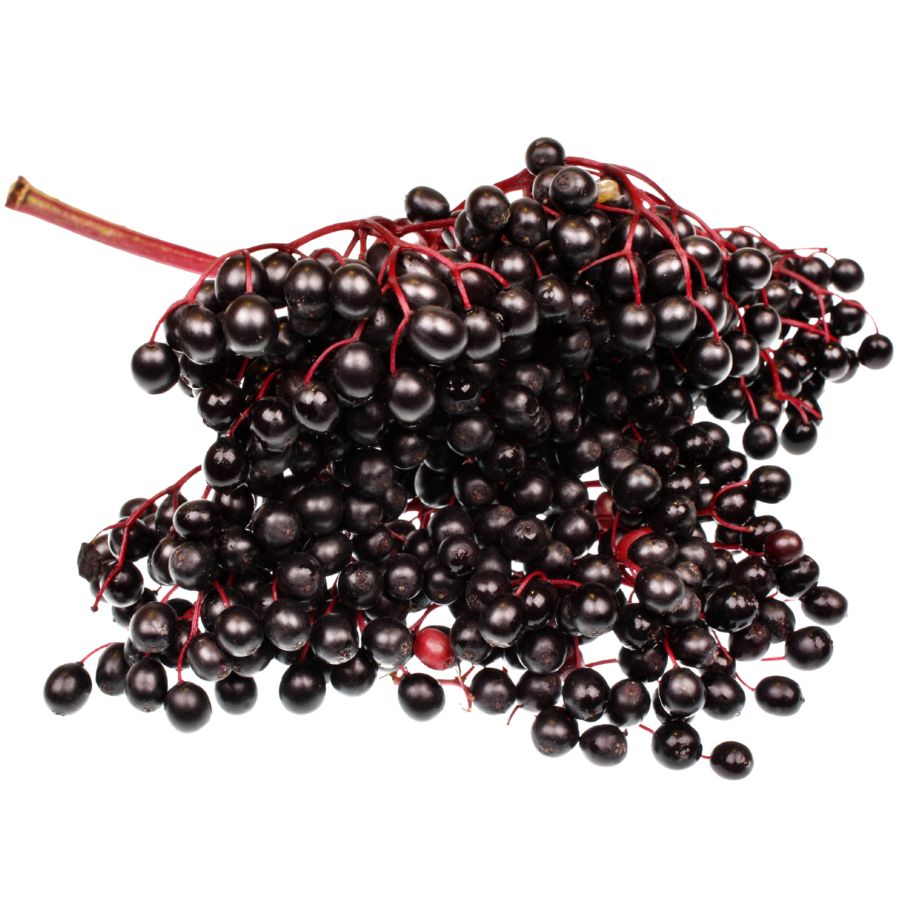
Elderberry is often called American elder, common elder, or sweet elder. It grows as a large, shrubby plant with clusters of tiny white flowers that eventually turn into deep purple to black berries.
You can recognize elderberry by its compound leaves with five to eleven serrated leaflets and its flat-topped flower clusters. One important thing to watch out for is its toxic lookalikes, like pokeweed, which has very different smooth-edged leaves and reddish stems.
The ripe berries have a tart, almost earthy flavor and a soft texture when cooked. People usually cook elderberries into syrups, jams, pies, or wine because eating raw berries can cause nausea.
Only the ripe, cooked berries and flowers are edible, while the leaves, stems, and unripe berries are toxic. Always take care to strip the berries cleanly from their stems before using them, as even small bits of stem can cause problems.
Serviceberry (Amelanchier alnifolia)
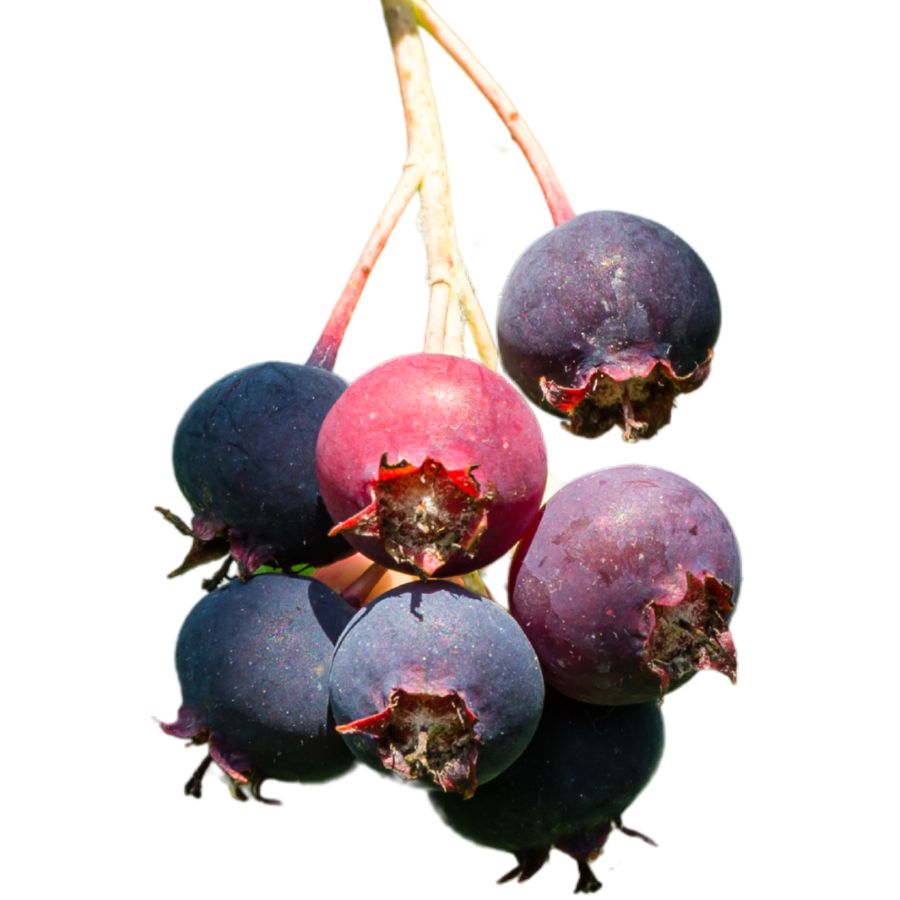
Sweet and often compared to blueberries, serviceberry fruit grows in clusters on small trees and shrubs known by names like juneberry, shadbush, and sarvisberry. When ripe, the berries are deep purple to almost black, and they have a soft, juicy texture that bursts with flavor when you bite into them.
You can tell serviceberries apart from similar-looking plants like chokecherries by paying close attention to the leaves and the berry structure. Serviceberry leaves are finely toothed and oval, while chokecherry leaves tend to be more heavily serrated and broader near the tip.
The fruit has a mild, slightly nutty flavor underneath its berry sweetness, making it perfect for pies, jams, and even simple snacking straight off the tree. Some people like to dry the berries for later use, grinding them into meal or adding them to baked goods.
Only the berries are good for eating, so avoid trying other parts of the plant like the bark or leaves. Interestingly, serviceberry seeds have a faint almond taste, a reminder that this plant is part of the rose family just like apples and cherries.
Knotweed (Polygonum spp.)
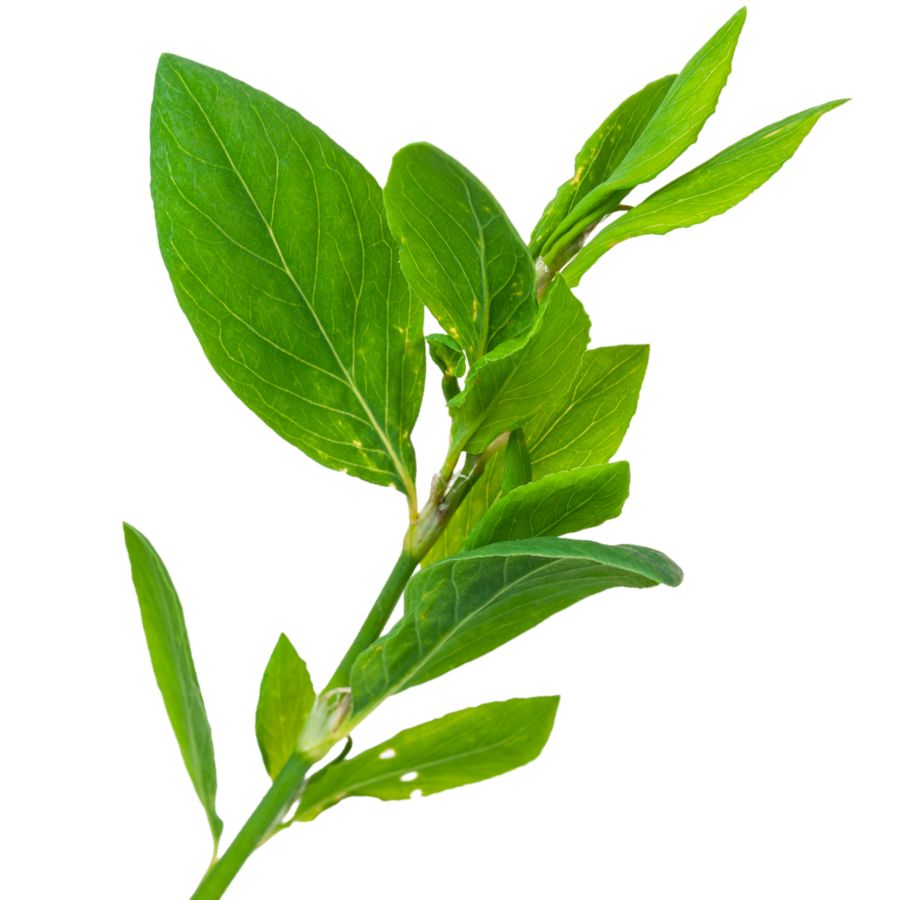
Knotweed grows tall with bamboo-like stalks and papery sheaths around each node, which is where you’ll usually snap off the edible sections. The youngest shoots are best, offering a juicy texture and a pleasant sourness.
You’ll notice that it resembles bamboo or rhubarb, but rhubarb leaves are toxic and shaped differently, while bamboo doesn’t have the reddish joints knotweed does. Always confirm the node structure before harvesting.
The flavor is sharp and lemony, and people often simmer it with sugar to make syrup, jelly, or compote. It’s also great sautéed briefly with a bit of oil and salt, especially when sliced thin.
Avoid using the lower, thicker stalks, which become tough and stringy with age. If you’re gathering near urban areas, steer clear of spots that may have been sprayed with herbicide—knotweed is often targeted for removal.
Sow Thistle (Sonchus oleraceus)
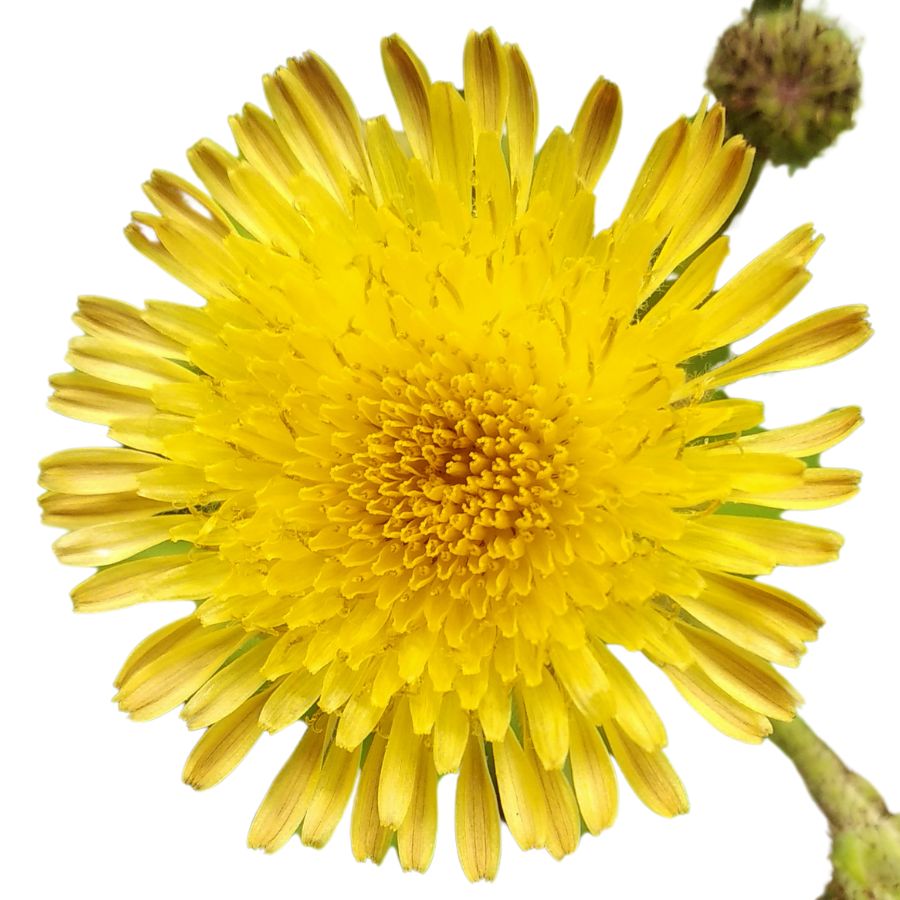
Sow thistle, often called hare’s thistle or milk thistle, is a spiny-leaved plant with bright yellow flowers that resemble small dandelions. The young leaves are tender and green, with a mild flavor that makes them easy to mix into salads or sautés.
The leaves and tender stems are the parts you can eat, and they are often lightly steamed or added raw to dishes for a slight bitter note. Older leaves can get fibrous and less pleasant, so it helps to pick younger plants if you want a smoother texture.
When foraging, make sure you are not confusing sow thistle with prickly lettuce or spiny sow thistle, both of which have sharper spines and a much tougher texture. One good way to tell is by snapping a stem and checking for the milky sap and softer feel that true sow thistle has.
Sow thistle has also been used traditionally for its potential medicinal properties, especially for digestion. Always harvest away from roadsides or treated areas, since the leaves can easily absorb chemicals from the surrounding environment.
Oregon Grape (Mahonia aquifolium)
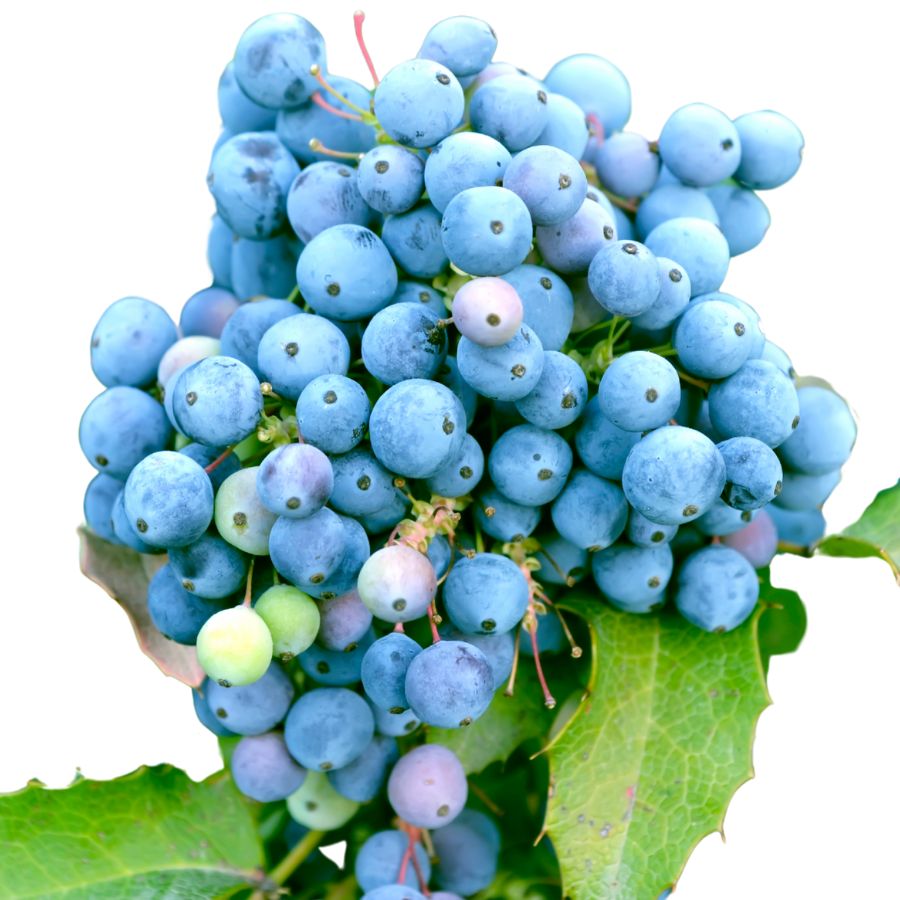
Oregon grape grows in low, woody clusters and has spiny, holly-like leaves with a waxy sheen. The berries are a deep blue with dusty coatings and grow in tight bunches, making them easy to gather when ripe.
The berries are tart and slightly bitter, with a texture similar to a small blueberry but firmer and more seedy. They’re most often cooked down into jelly, syrup, or wine, since eating them raw can be unpleasant due to their intense astringency.
It’s easy to mistake Oregon grape for holly or barberry, but holly lacks edible berries and barberry usually has single berries rather than clusters. The leaf shape might be similar, but Oregon grape leaves grow in paired leaflets along a central stem, not individually.
Only the berries are edible—leave the leaves, bark, and roots alone. Some people try to chew the seeds, but they’re woody and not worth the effort.
Huckleberry (Vaccinium spp.)

Huckleberries grow on woody shrubs and bear dark berries that range from blue to nearly purple-black, often with a slightly gritty skin. The flavor is strong—sweet, tangy, and sometimes almost wild-tasting, especially when fresh.
You’ll usually find them cooked into sauces, made into compotes, or baked into muffins and pancakes. The leaves and stems aren’t edible, so only the fruit should be harvested.
While they’re similar in color to blueberries, huckleberries have larger seeds and a more robust flavor. Some people confuse them with deadly nightshade, but nightshade berries are glossier and grow in hanging clusters, not singly.
If you chew a huckleberry, expect a bit of crunch from the seeds, which helps set them apart from softer, smoother berries.
Toxic Plants That Look Like Edible Plants
There are plenty of wild edibles to choose from, but some toxic native plants closely resemble them. Mistaking the wrong one can lead to severe illness or even death, so it’s important to know exactly what you’re picking.
Poison Hemlock (Conium maculatum)
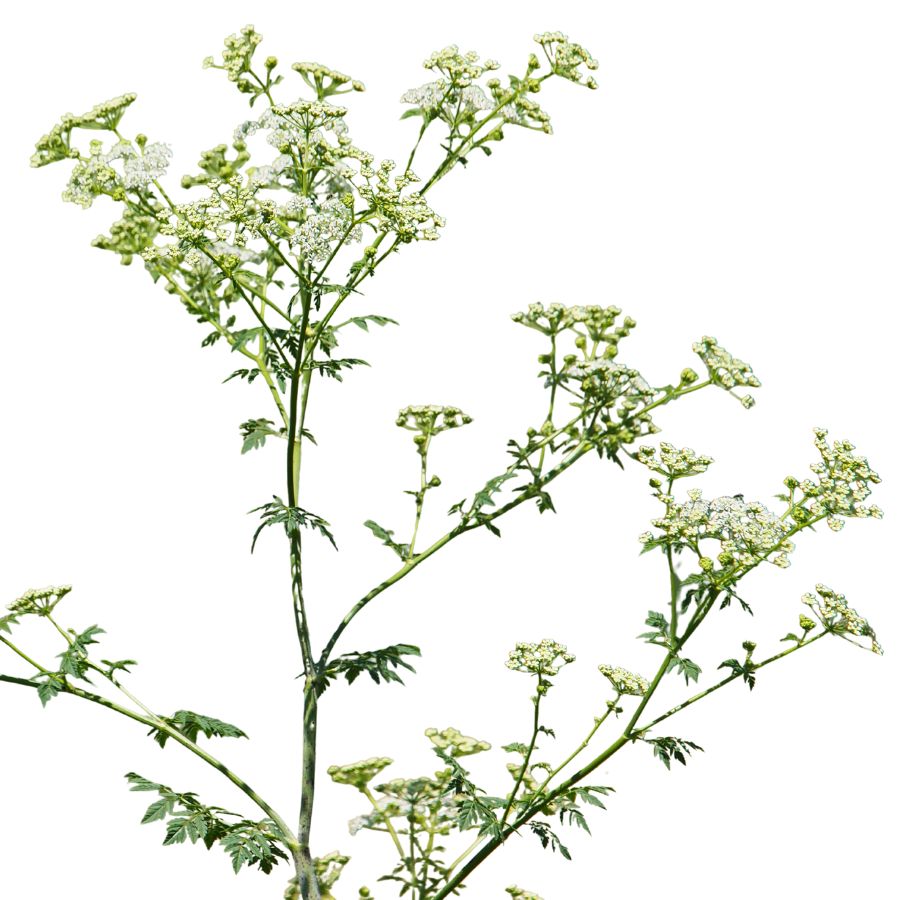
Often mistaken for: Wild carrot (Daucus carota)
Poison hemlock is a tall plant with lacy leaves and umbrella-like clusters of tiny white flowers. It has smooth, hollow stems with purple blotches and grows in sunny places like roadsides, meadows, and stream banks.
Unlike wild carrot, which has hairy stems and a dark central floret, poison hemlock has a musty odor and no flower center spot. It’s extremely toxic; just a small amount can be fatal, and even touching the sap can irritate the skin.
Water Hemlock (Cicuta spp.)
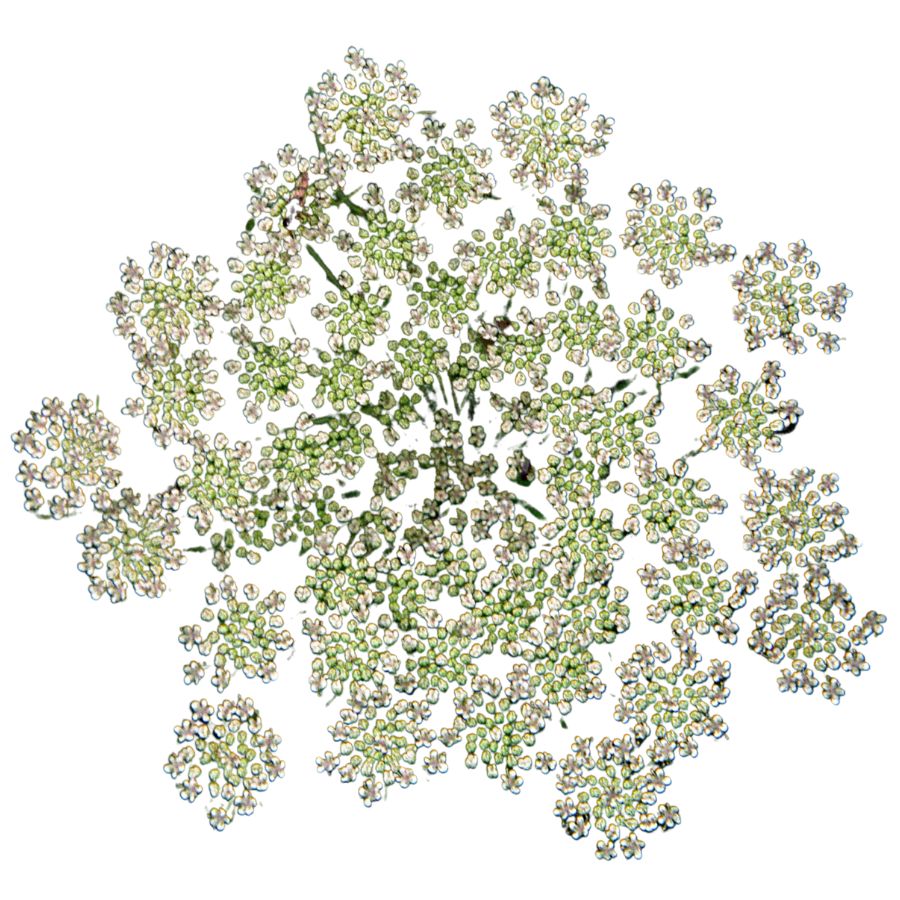
Often mistaken for: Wild parsnip (Pastinaca sativa) or wild celery (Apium spp.)
Water hemlock is a tall, branching plant with umbrella-shaped clusters of small white flowers. It grows in wet places like stream banks, marshes, and ditches, with stems that often show purple streaks or spots.
It can be confused with wild parsnip or wild celery, but its thick, hollow roots have internal chambers and release a yellow, foul-smelling sap when cut. Water hemlock is the most toxic plant in North America, and just a small amount can cause seizures, respiratory failure, and death.
False Hellebore (Veratrum viride)
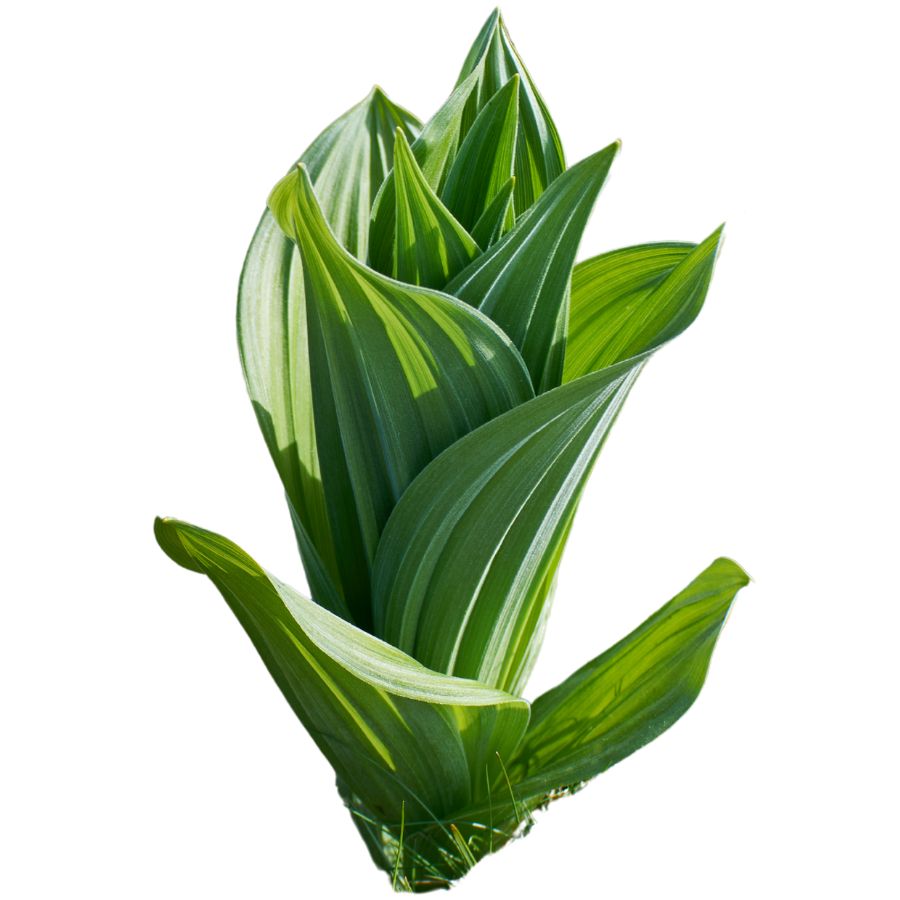
Often mistaken for: Ramps (Allium tricoccum)
False hellebore is a tall plant with broad, pleated green leaves that grow in a spiral from the base, often appearing early in spring. It grows in moist woods, meadows, and along streams.
It’s commonly mistaken for ramps, but ramps have a strong onion or garlic smell, while false hellebore is odorless and later grows a tall flower stalk. The plant is highly toxic, and eating any part can cause nausea, a slowed heart rate, and even death due to its alkaloids that affect the nervous and cardiovascular systems.
Death Camas (Zigadenus spp.)
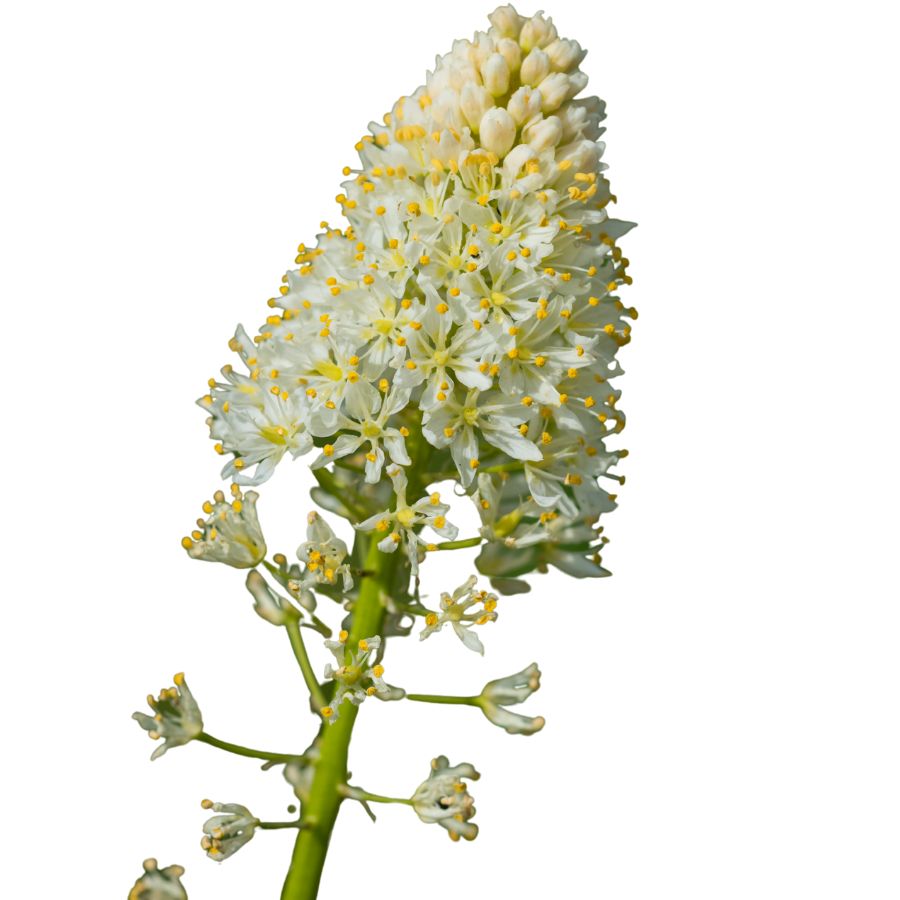
Often mistaken for: Wild onion or wild garlic (Allium spp.)
Death camas is a slender, grass-like plant that grows from underground bulbs and is found in open woods, meadows, and grassy hillsides. It has small, cream-colored flowers in loose clusters atop a tall stalk.
It’s often confused with wild onion or wild garlic due to their similar narrow leaves and habitats, but only Allium plants have a strong onion or garlic scent, while death camas has none. The plant is extremely poisonous, especially the bulbs, and even a small amount can cause nausea, vomiting, a slowed heartbeat, and potentially fatal respiratory failure.
Buckthorn Berries (Rhamnus spp.)
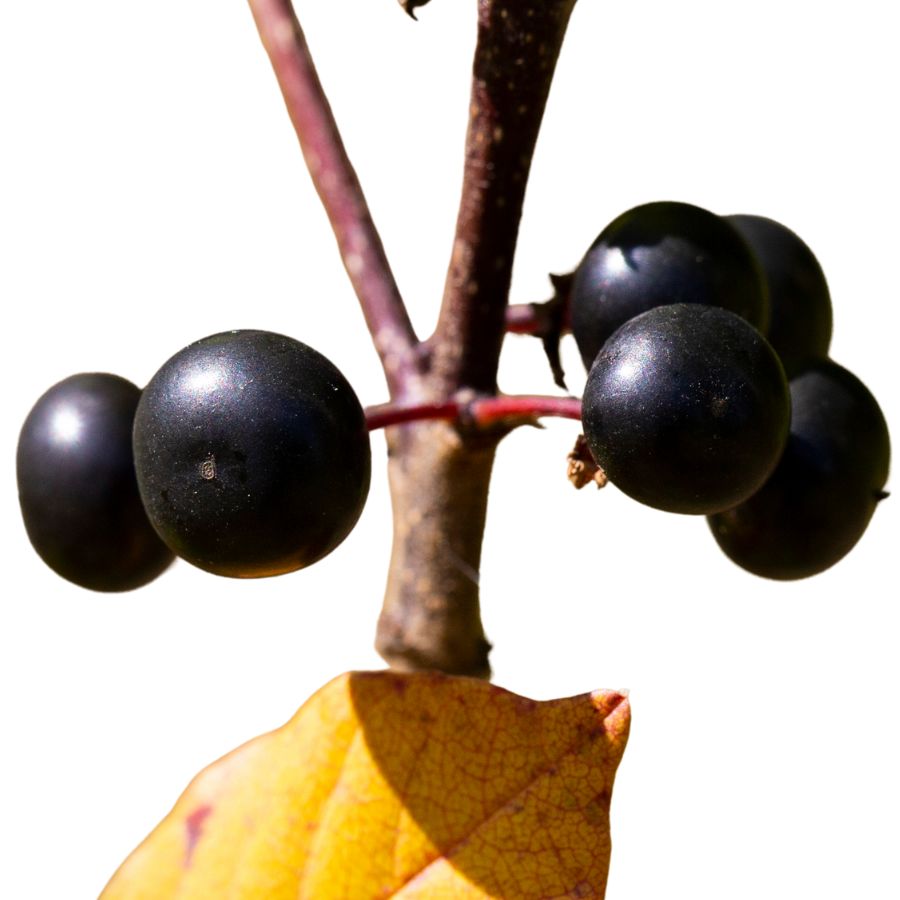
Often mistaken for: Elderberries (Sambucus spp.)
Buckthorn is a shrub or small tree often found along woodland edges, roadsides, and disturbed areas. It produces small, round berries that ripen to dark purple or black and usually grow in loose clusters.
These berries are sometimes mistaken for elderberries and other wild fruits, which also grow in dark clusters, but elderberries form flat-topped clusters on reddish stems while buckthorn berries are more scattered. Buckthorn berries are unsafe to eat as they contain compounds that can cause cramping, vomiting, and diarrhea, and large amounts may lead to dehydration and serious digestive problems.
Mayapple (Podophyllum peltatum)
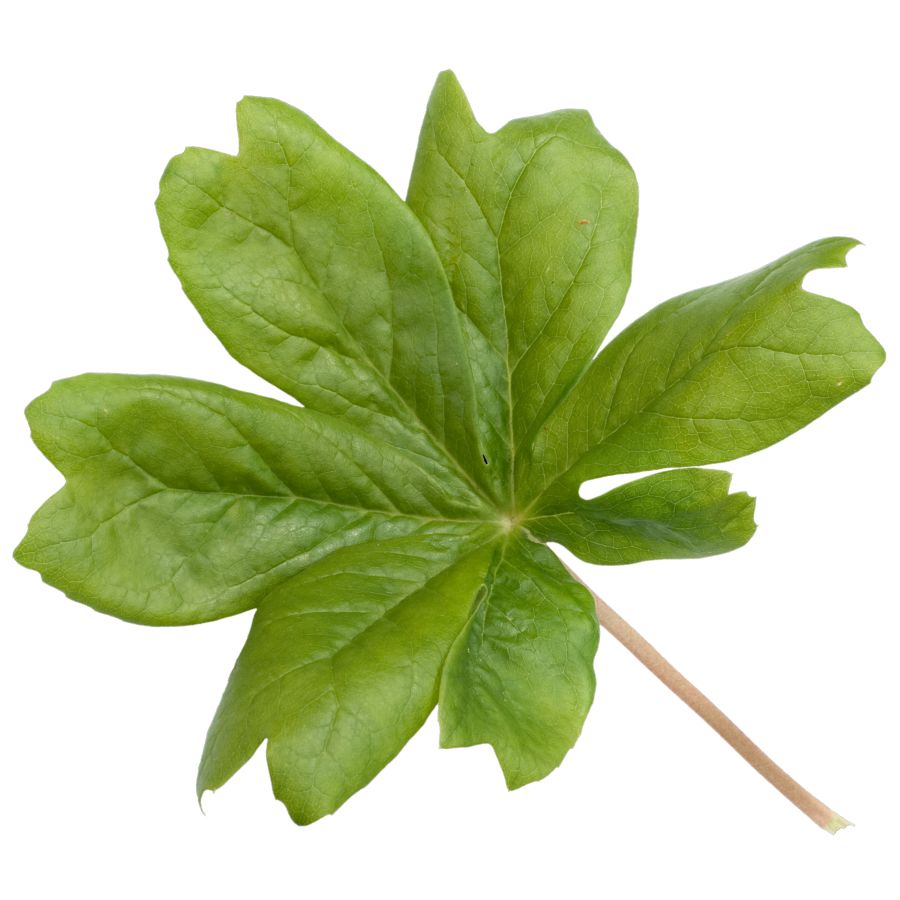
Often mistaken for: Wild grapes (Vitis spp.)
Mayapple is a low-growing plant found in shady forests and woodland clearings. It has large, umbrella-like leaves and produces a single pale fruit hidden beneath the foliage.
The unripe fruit resembles a small green grape, causing confusion with wild grapes, which grow in woody clusters on vines. All parts of the mayapple are toxic except the fully ripe, yellow fruit, which is only safe in small amounts. Eating unripe fruit or other parts can lead to nausea, vomiting, and severe dehydration.
Virginia Creeper (Parthenocissus quinquefolia)
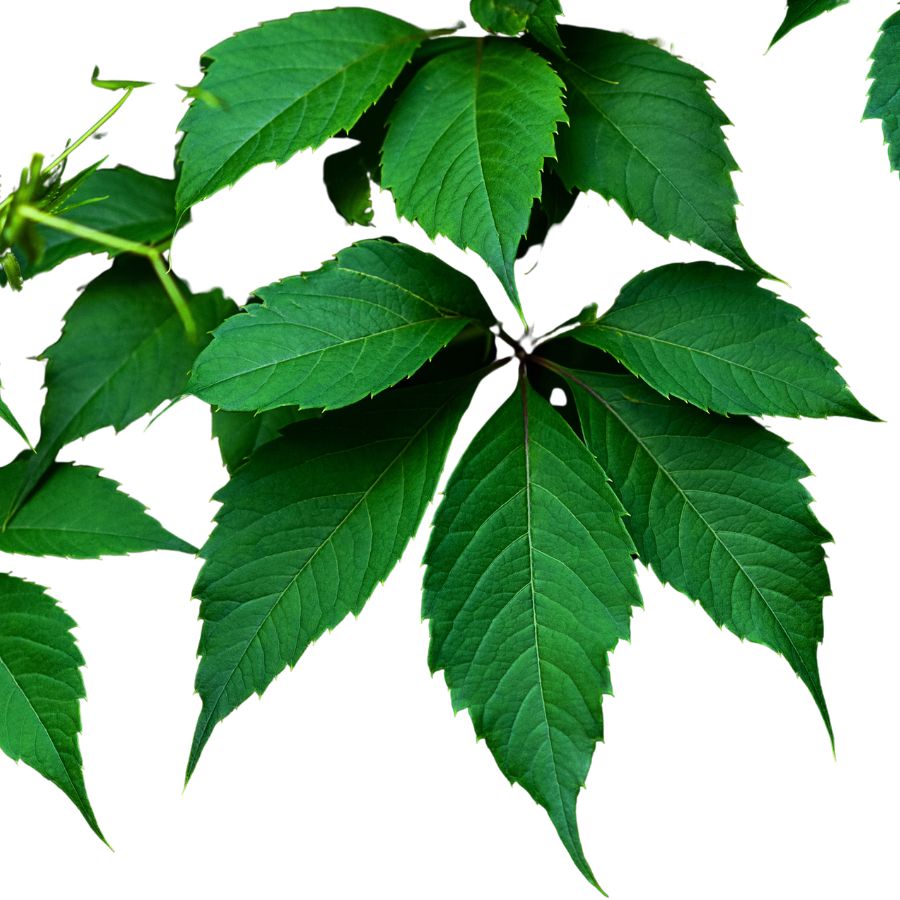
Often mistaken for: Wild grapes (Vitis spp.)
Virginia creeper is a fast-growing vine found on fences, trees, and forest edges. It has five leaflets per stem and produces small, bluish-purple berries from late summer to fall.
It’s often confused with wild grapes since both are climbing vines with similar berries, but grapevines have large, lobed single leaves and tighter fruit clusters. Virginia creeper’s berries are toxic to humans and contain oxalate crystals that can cause nausea, vomiting, and throat irritation.
Castor Bean (Ricinus communis)
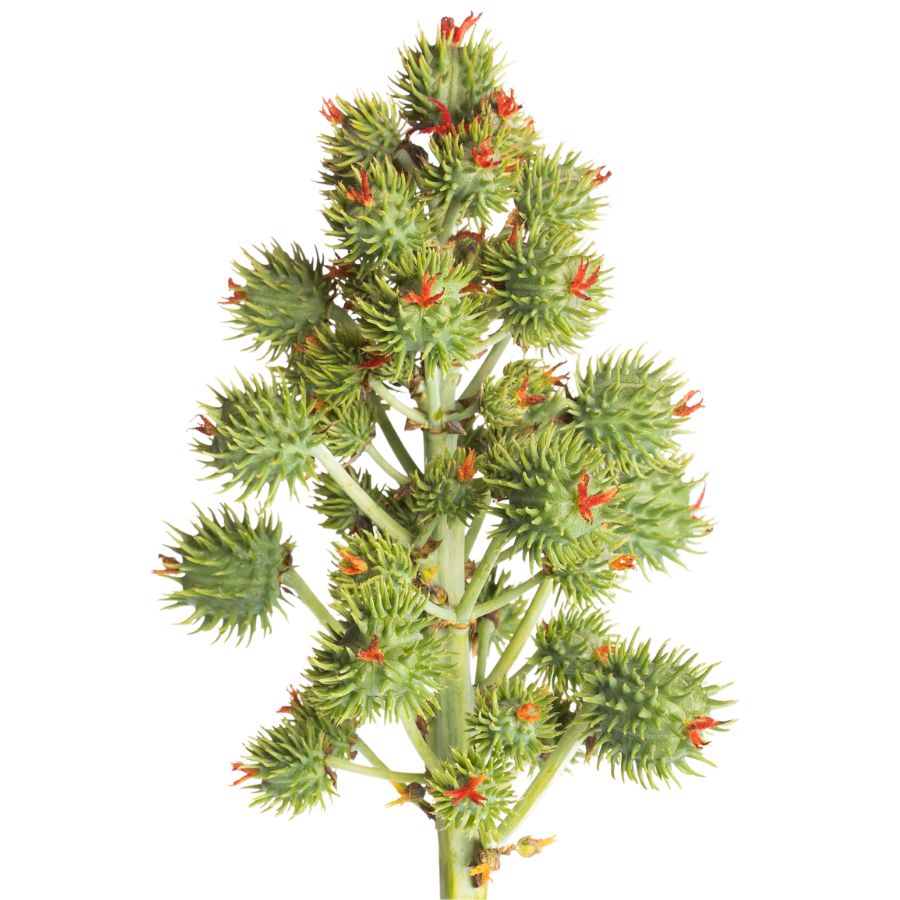
Often mistaken for: Wild rhubarb (Rumex spp. or Rheum spp.)
Castor bean is a bold plant with large, lobed leaves and tall red or green stalks, often found in gardens, along roadsides, and in disturbed areas in warmer regions in the US. Its red-tinged stems and overall size can resemble wild rhubarb to the untrained eye.
Unlike rhubarb, castor bean plants produce spiny seed pods containing glossy, mottled seeds that are extremely toxic. These seeds contain ricin, a deadly compound even in small amounts. While all parts of the plant are toxic, the seeds are especially dangerous and should never be handled or ingested.
A Quick Reminder
Before we get into the specifics about where and how to find these mushrooms, we want to be clear that before ingesting any wild mushroom, it should be identified with 100% certainty as edible by someone qualified and experienced in mushroom identification, such as a professional mycologist or an expert forager. Misidentification of mushrooms can lead to serious illness or death.
All mushrooms have the potential to cause severe adverse reactions in certain individuals, even death. If you are consuming mushrooms, it is crucial to cook them thoroughly and properly and only eat a small portion to test for personal tolerance. Some people may have allergies or sensitivities to specific mushrooms, even if they are considered safe for others.
The information provided in this article is for general informational and educational purposes only. Foraging for wild mushrooms involves inherent risks.
How to Get the Best Results Foraging
Safety should always come first when it comes to foraging. Whether you’re in a rural forest or a suburban greenbelt, knowing how to harvest wild foods properly is a key part of staying safe and respectful in the field.
Always Confirm Plant ID Before You Harvest Anything
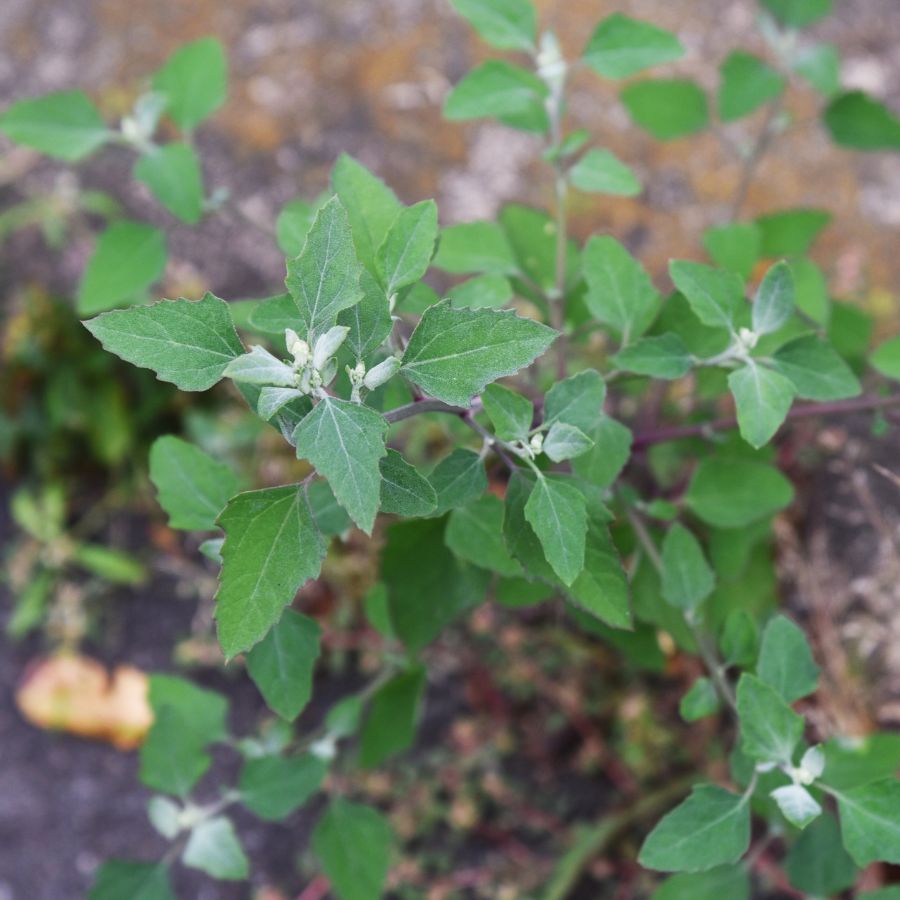
Knowing exactly what you’re picking is the most important part of safe foraging. Some edible plants have nearly identical toxic lookalikes, and a wrong guess can make you seriously sick.
Use more than one reliable source to confirm your ID, like field guides, apps, and trusted websites. Pay close attention to small details. Things like leaf shape, stem texture, and how the flowers or fruits are arranged all matter.
Not All Edible Plants Are Safe to Eat Whole
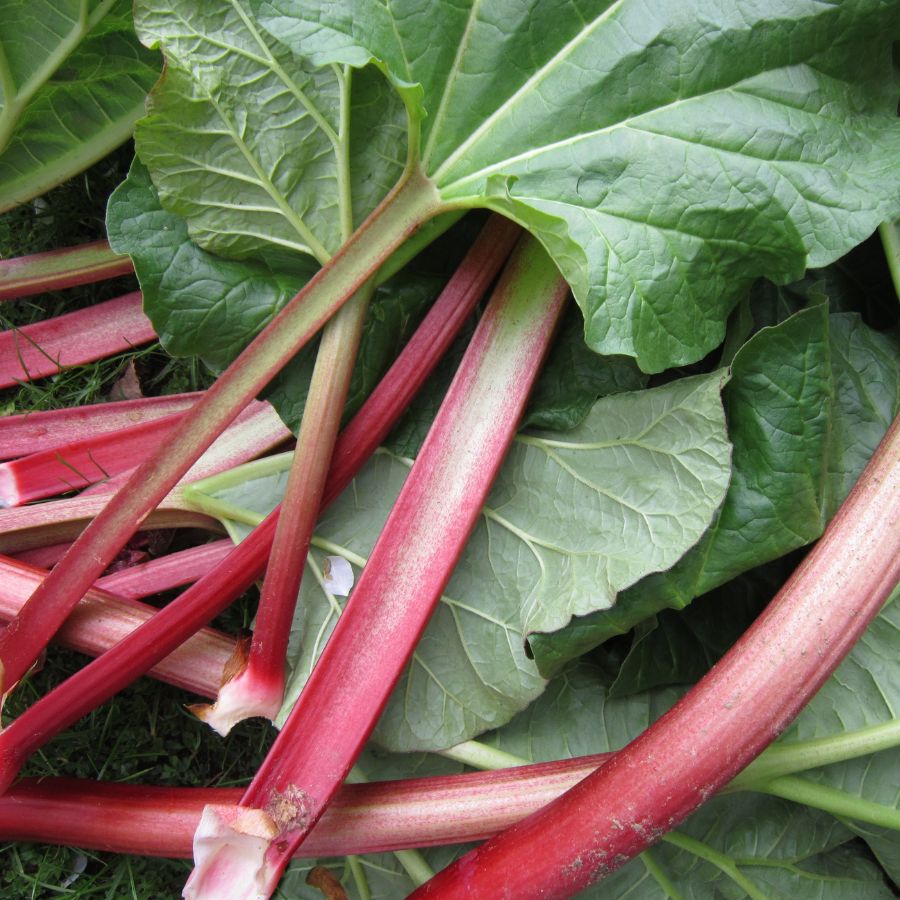
Just because a plant is edible doesn’t mean every part of it is safe. Some plants have leaves, stems, or seeds that can be toxic if eaten raw or prepared the wrong way.
For example, pokeweed is only safe when young and properly cooked, while elderberries need to be heated before eating. Rhubarb stems are fine, but the leaves are poisonous. Always look up which parts are edible and how they should be handled.
Avoid Foraging in Polluted or Contaminated Areas
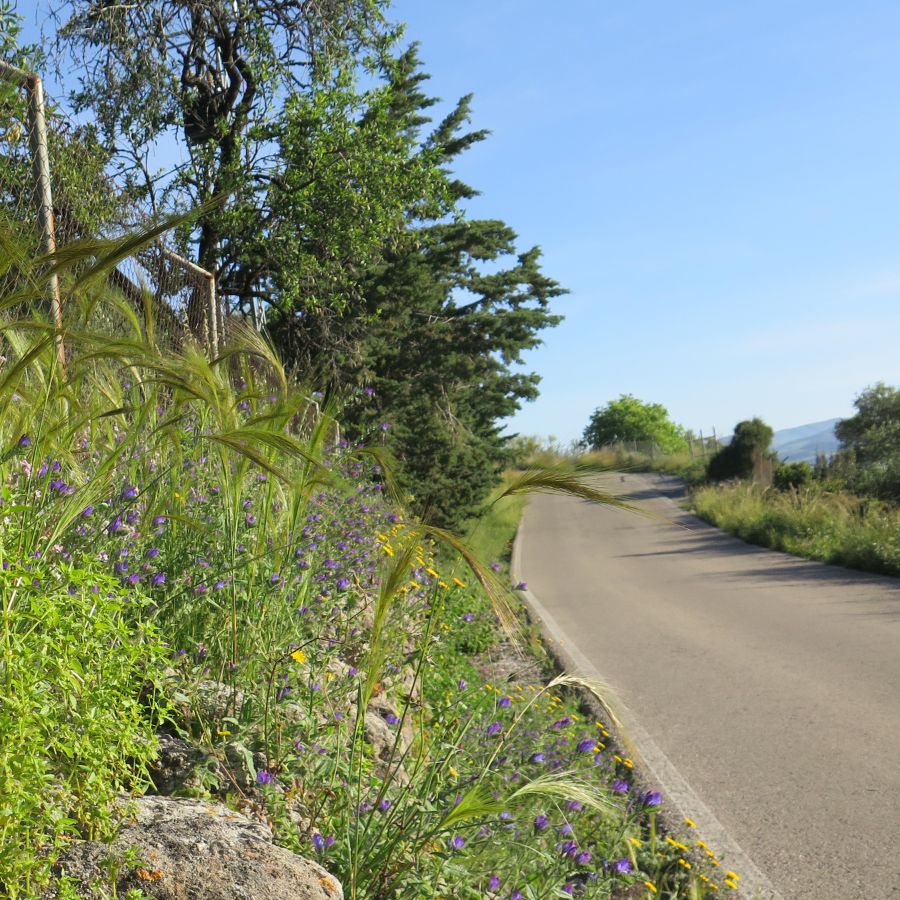
Where you forage matters just as much as what you pick. Plants growing near roads, buildings, or farmland might be coated in chemicals or growing in polluted soil.
Even safe plants can take in harmful substances from the air, water, or ground. Stick to clean, natural areas like forests, local parks that allow foraging, or your own yard when possible.
Don’t Harvest More Than What You Need
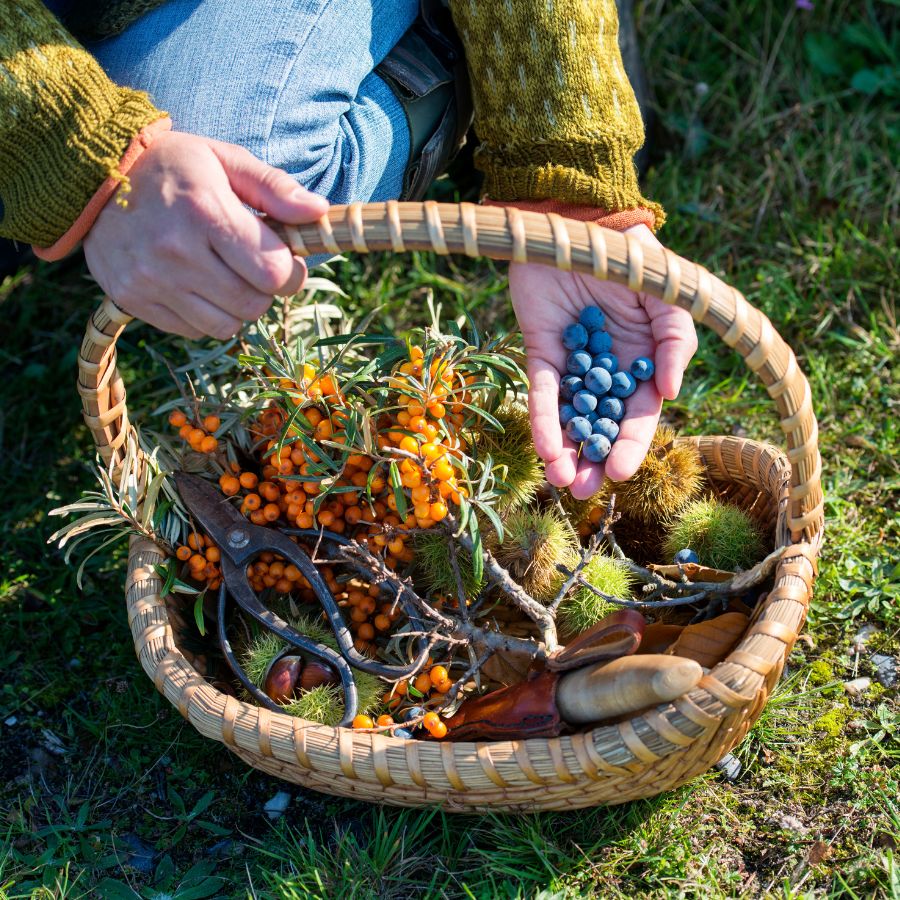
When you forage, take only what you plan to use. Overharvesting can hurt local plant populations and reduce future growth in that area.
Leaving plenty behind helps plants reproduce and supports wildlife that depends on them. It also ensures other foragers have a chance to enjoy the same resources.
Protect Yourself and Your Finds with Proper Foraging Gear

Having the right tools makes foraging easier and safer. Gloves protect your hands from irritants like stinging nettle, and a good knife or scissors lets you harvest cleanly without damaging the plant.
Use a basket or breathable bag to carry what you collect. Plastic bags hold too much moisture and can cause your greens to spoil before you get home.
This forager’s toolkit covers the essentials for any level of experience.
Watch for Allergic Reactions When Trying New Wild Foods

Even if a wild plant is safe to eat, your body might react to it in unexpected ways. It’s best to try a small amount first and wait to see how you feel.
Be extra careful with kids or anyone who has allergies. A plant that’s harmless for one person could cause a reaction in someone else.
Check Local Rules Before Foraging on Any Land
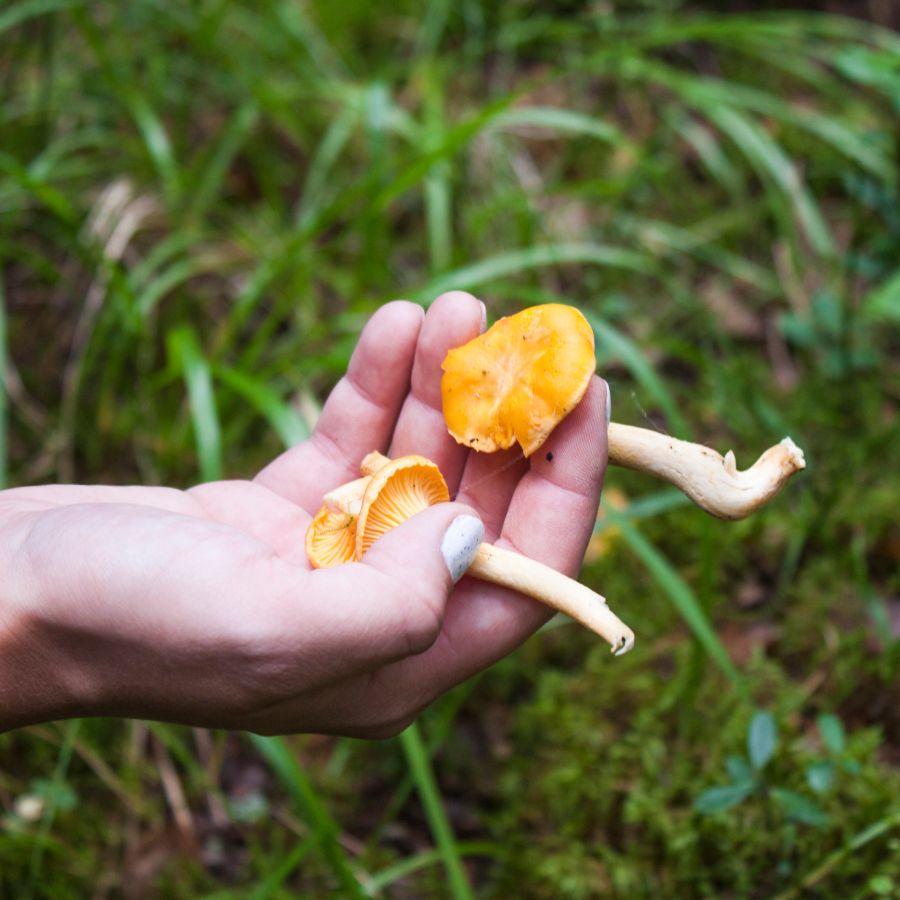
Before you start foraging, make sure you know the rules for the area you’re in. What’s allowed in one spot might be completely off-limits just a few miles away.
Some public lands permit limited foraging, while others, like national parks, usually don’t allow it at all. If you’re on private property, always get permission first.
Before you head out
Before embarking on any foraging activities, it is essential to understand and follow local laws and guidelines. Always confirm that you have permission to access any land and obtain permission from landowners if you are foraging on private property. Trespassing or foraging without permission is illegal and disrespectful.
For public lands, familiarize yourself with the foraging regulations, as some areas may restrict or prohibit the collection of mushrooms or other wild foods. These regulations and laws are frequently changing so always verify them before heading out to hunt. What we have listed below may be out of date and inaccurate as a result.
Where to Find Forageables in the State
There is a range of foraging spots where edible plants grow naturally and often in abundance:
| Plant | Locations |
| Dandelion (Taraxacum officinale) | – Olympic National Park – Mount Rainier National Park – Yakima River Canyon |
| Stinging Nettle (Urtica dioica) | – Mount Hood National Forest – Olympic National Forest – Mount Adams Wilderness |
| Plantain (Plantago spp.) | – Gifford Pinchot National Forest – Mount Rainier National Park – Columbia River Gorge |
| Chickweed (Stellaria media) | – Olympic National Park – Washington Coast – Mount Rainier National Park |
| Red Clover (Trifolium pratense) | – Olympic National Forest – Mount Rainier National Park – Spokane County |
| Purslane (Portulaca oleracea) | – Columbia River Gorge – Wenatchee National Forest – Snoqualmie Pass |
| Wood Sorrel (Oxalis spp.) | – Olympic National Park – Mount Rainier National Park – Columbia River Gorge |
| Mallow (Malva spp.) | – Mount Hood National Forest – Columbia River Gorge – Seattle City Parks |
| Yarrow (Achillea millefolium) | – Mount Rainier National Park – Olympic National Park – Snoqualmie National Forest |
| Blackberry (Rubus fruticosus) | – Mount Hood National Forest – Olympic National Park – Skagit Valley |
| Salmonberry (Rubus spectabilis) | – Olympic National Park – Mount Rainier National Park – Columbia River Gorge |
| Thimbleberry (Rubus parviflorus) | – Olympic National Park – Mount Rainier National Park – North Cascades National Park |
| Woodland Strawberry (Fragaria vesca) | – Mount Rainier National Park – Olympic National Park – Mount Hood National Forest |
| Red Raspberry (Rubus idaeus) | – Olympic National Park – Mount Rainier National Park – North Cascades National Park |
| Violet (Viola spp.) | – Olympic National Park – Mount Rainier National Park – Columbia River Gorge |
| Elderberry (Sambucus nigra) | – Mount Hood National Forest – Columbia River Gorge – Gifford Pinchot National Forest |
| Serviceberry (Amelanchier alnifolia) | – Mount Hood National Forest – Mount Rainier National Park – Olympic National Park |
| Knotweed (Polygonum spp.) | – Olympic National Park – Mount Rainier National Park – Columbia River Gorge |
| Sow Thistle (Sonchus oleraceus) | – Olympic National Forest – Mount Hood National Forest – Gifford Pinchot National Forest |
| Oregon Grape (Mahonia aquifolium) | – Olympic National Park – Mount Hood National Forest – Columbia River Gorge |
| Huckleberry (Vaccinium spp.) | – Mount Rainier National Park – Olympic National Park – Gifford Pinchot National Forest |
| Sweet Cicely (Osmorhiza spp.) | – Olympic National Park – Mount Rainier National Park – Columbia River Gorge |
| Wild Rose (Rosa spp.) | – Mount Rainier National Park – Olympic National Park – Snoqualmie Pass |
| Garlic Mustard (Alliaria petiolata) | – Columbia River Gorge – Mount Hood National Forest – Gifford Pinchot National Forest |
| Lamb’s Quarters (Chenopodium album) | – Mount Rainier National Park – Olympic National Park – Spokane County |
| Cattail (Typha latifolia) | – Columbia River Gorge – Mount Rainier National Park – Snoqualmie Pass |
Peak Foraging Seasons
Different edible plants grow at different times of year, depending on the season and weather. Timing your search makes all the difference.
Spring
Spring brings a fresh wave of wild edible plants as the ground thaws and new growth begins:
| Plant | Months | Best Weather Conditions |
| Dandelion (Taraxacum officinale) | March – May | Mild temperatures and consistent rain; sunny intervals |
| Stinging Nettle (Urtica dioica) | March – May | Cool, moist conditions, typically found in shaded areas |
| Plantain (Plantago spp.) | April – June | Mild, moist weather, especially near roadsides or meadows |
| Chickweed (Stellaria media) | March – May | Cool, damp weather with partial sun or shade |
| Red Clover (Trifolium pratense) | April – June | Temperatures between 50-75°F, mild sunny weather |
| Purslane (Portulaca oleracea) | April – June | Warm, dry conditions with full sun exposure |
| Wood Sorrel (Oxalis spp.) | March – May | Moist, cool environments, partial shade |
| Mallow (Malva spp.) | April – June | Cool, damp spring weather, typically in disturbed soils |
| Yarrow (Achillea millefolium) | April – June | Warm, sunny conditions, well-drained soil |
| Violet (Viola spp.) | March – May | Moist, cool weather, partial to full shade |
| Garlic Mustard (Alliaria petiolata) | April – June | Cool, damp weather with light to moderate rainfall |
Summer
Summer is a peak season for foraging, with fruits, flowers, and greens growing in full force:
| Plant | Months | Best Weather Conditions |
| Blackberry (Rubus fruticosus) | June – August | Warm, sunny conditions, slightly dry weather |
| Salmonberry (Rubus spectabilis) | June – August | Warm, damp conditions, typically near water sources |
| Thimbleberry (Rubus parviflorus) | June – August | Warm, moist weather, often found in shaded forest areas |
| Woodland Strawberry (Fragaria vesca) | June – August | Cool mornings, warm afternoons, with moderate rainfall |
| Red Raspberry (Rubus idaeus) | June – August | Warm, sunny weather, moist conditions near streams |
| Elderberry (Sambucus nigra) | June – August | Warm, moist weather, typically in wetland areas |
| Serviceberry (Amelanchier alnifolia) | May – July | Mild, sunny weather in moist forested or woodland areas |
| Knotweed (Polygonum spp.) | June – September | Warm, sunny, dry conditions in disturbed soils |
| Sweet Cicely (Osmorhiza spp.) | June – August | Cool, moist conditions, often in shaded areas |
| Wild Rose (Rosa spp.) | June – August | Warm, sunny, and dry weather with moderate rainfall |
| Lamb’s Quarters (Chenopodium album) | June – August | Warm, dry weather with plenty of sunlight |
| Cattail (Typha latifolia) | June – August | Warm, moist conditions, typically near water bodies |
Fall
As temperatures drop, many edible plants shift underground or produce their last harvests:
| Plant | Months | Best Weather Conditions |
| Huckleberry (Vaccinium spp.) | August – October | Cool, moist conditions in forested, acidic soil |
| Serviceberry (Amelanchier alnifolia) | August – October | Crisp, cool weather, often found in forest edges |
| Woodland Strawberry (Fragaria vesca) | September – October | Cooler weather with moderate rainfall |
| Red Raspberry (Rubus idaeus) | September – October | Crisp, cool weather, slightly damp conditions |
| Violet (Viola spp.) | September – October | Cool, damp weather, partial to full shade |
| Oregon Grape (Mahonia aquifolium) | September – November | Cool, wet conditions, often in shaded or forested areas |
Winter
Winter foraging is limited but still possible, with hardy plants and preserved growth holding on through the cold:
| Plant | Months | Best Weather Conditions |
| Oregon Grape (Mahonia aquifolium) | December – February | Cold, damp weather, often in shaded areas of forests |
| Sweet Cicely (Osmorhiza spp.) | December – February | Cold, moist conditions in shaded, damp environments |
| Cattail (Typha latifolia) | December – February | Cold, wet conditions, typically found near frozen marshes |
One Final Disclaimer
The information provided in this article is for general informational and educational purposes only. Foraging for wild plants and mushrooms involves inherent risks. Some wild plants and mushrooms are toxic and can be easily mistaken for edible varieties.
Before ingesting anything, it should be identified with 100% certainty as edible by someone qualified and experienced in mushroom and plant identification, such as a professional mycologist or an expert forager. Misidentification can lead to serious illness or death.
All mushrooms and plants have the potential to cause severe adverse reactions in certain individuals, even death. If you are consuming foraged items, it is crucial to cook them thoroughly and properly and only eat a small portion to test for personal tolerance. Some people may have allergies or sensitivities to specific mushrooms and plants, even if they are considered safe for others.
Foraged items should always be fully cooked with proper instructions to ensure they are safe to eat. Many wild mushrooms and plants contain toxins and compounds that can be harmful if ingested.


